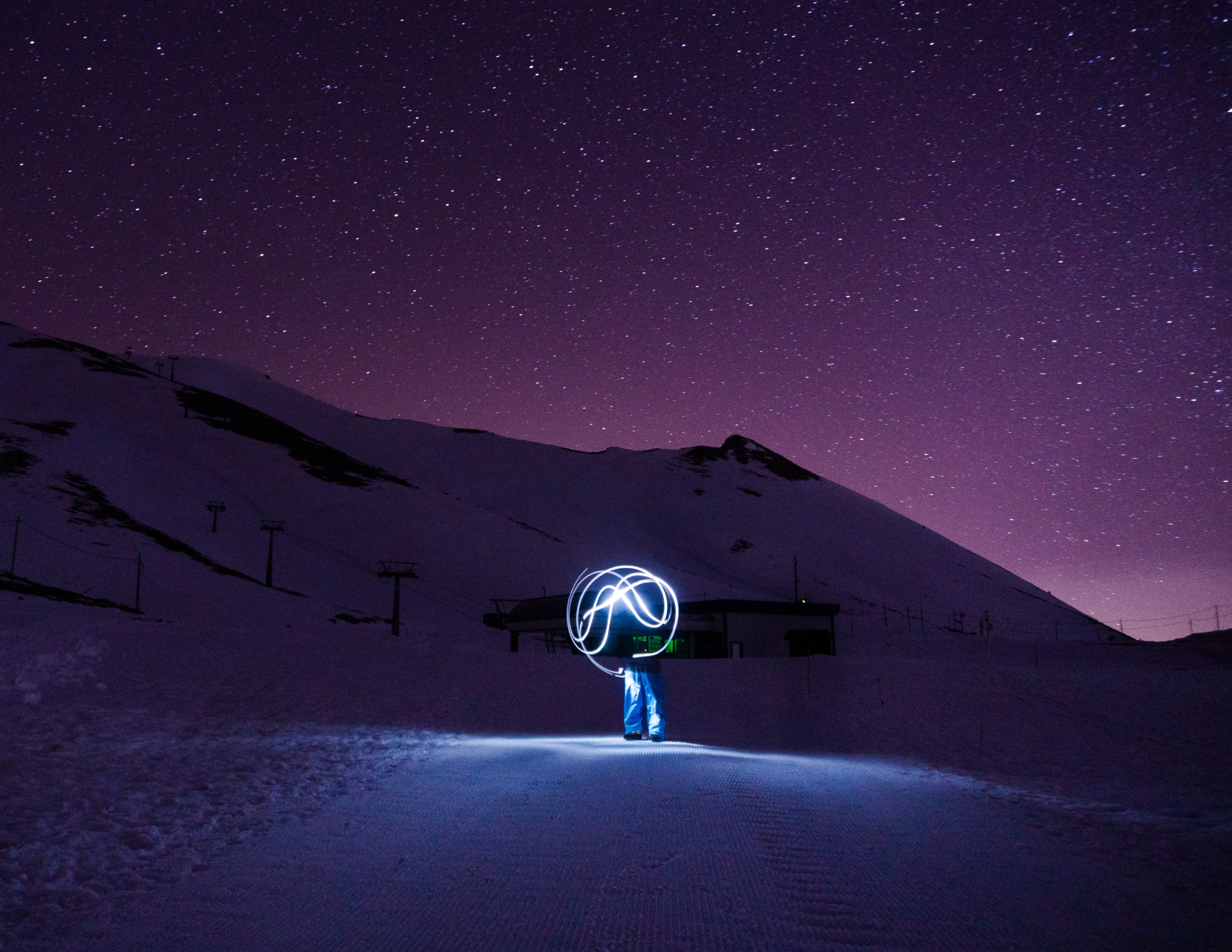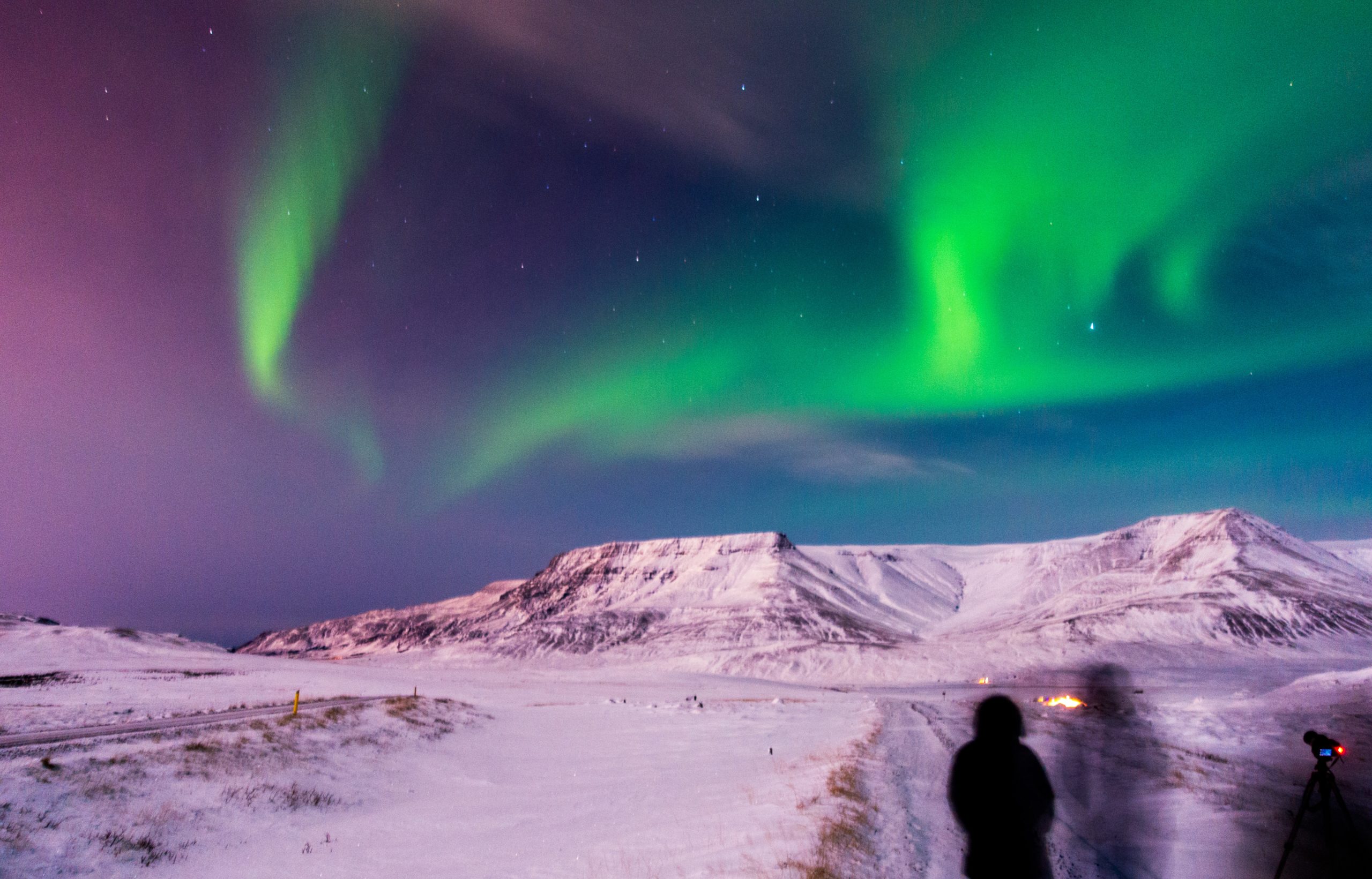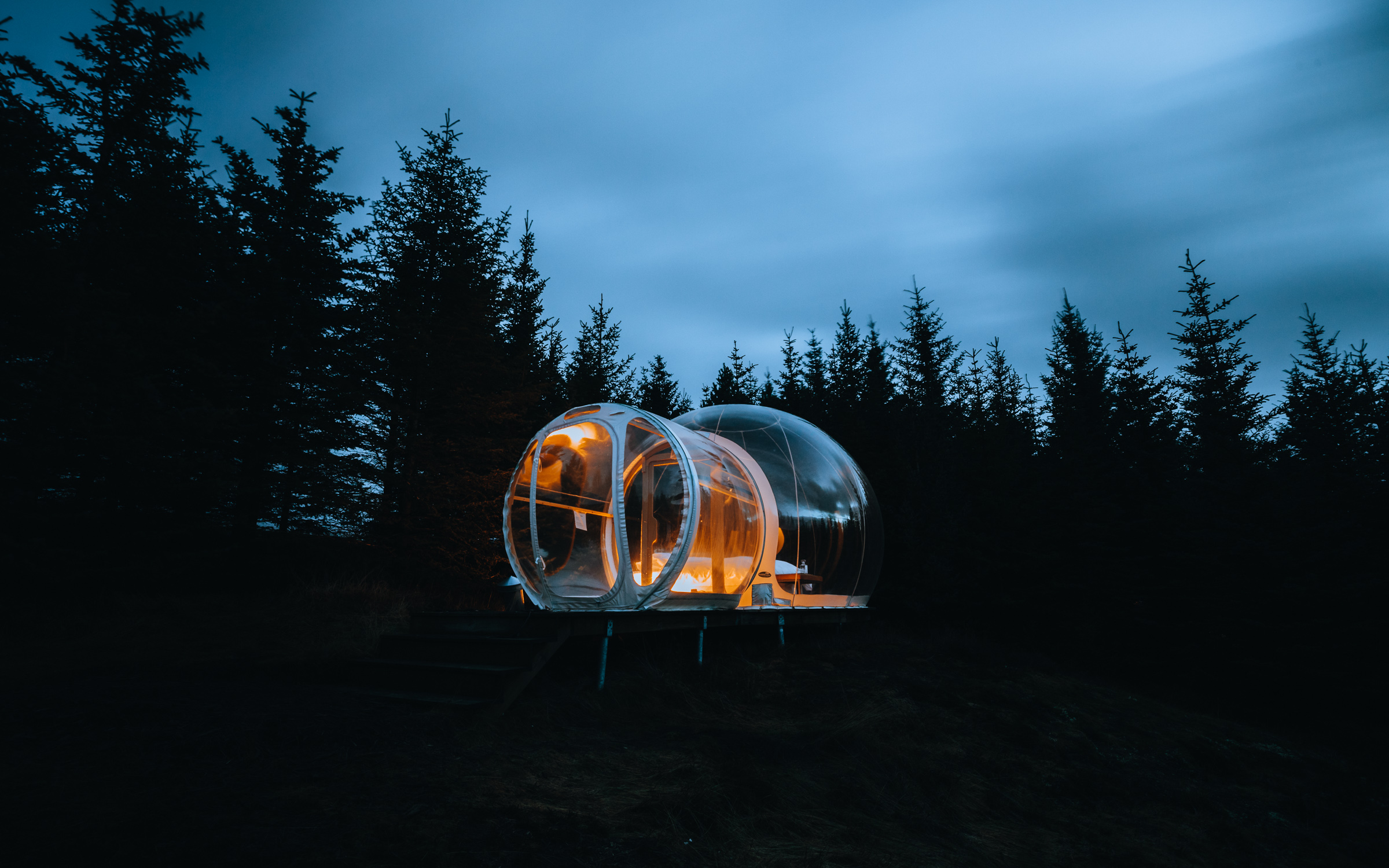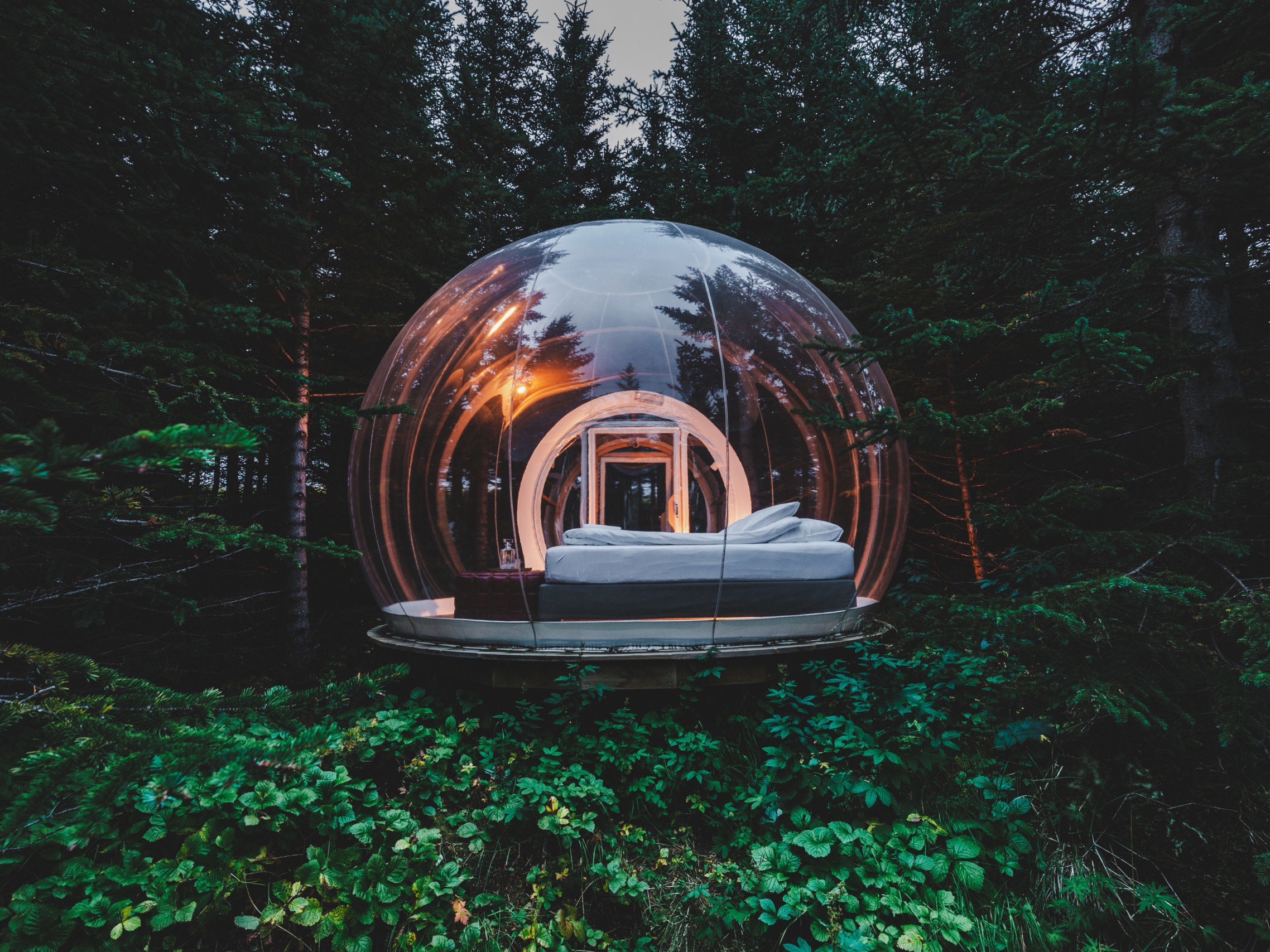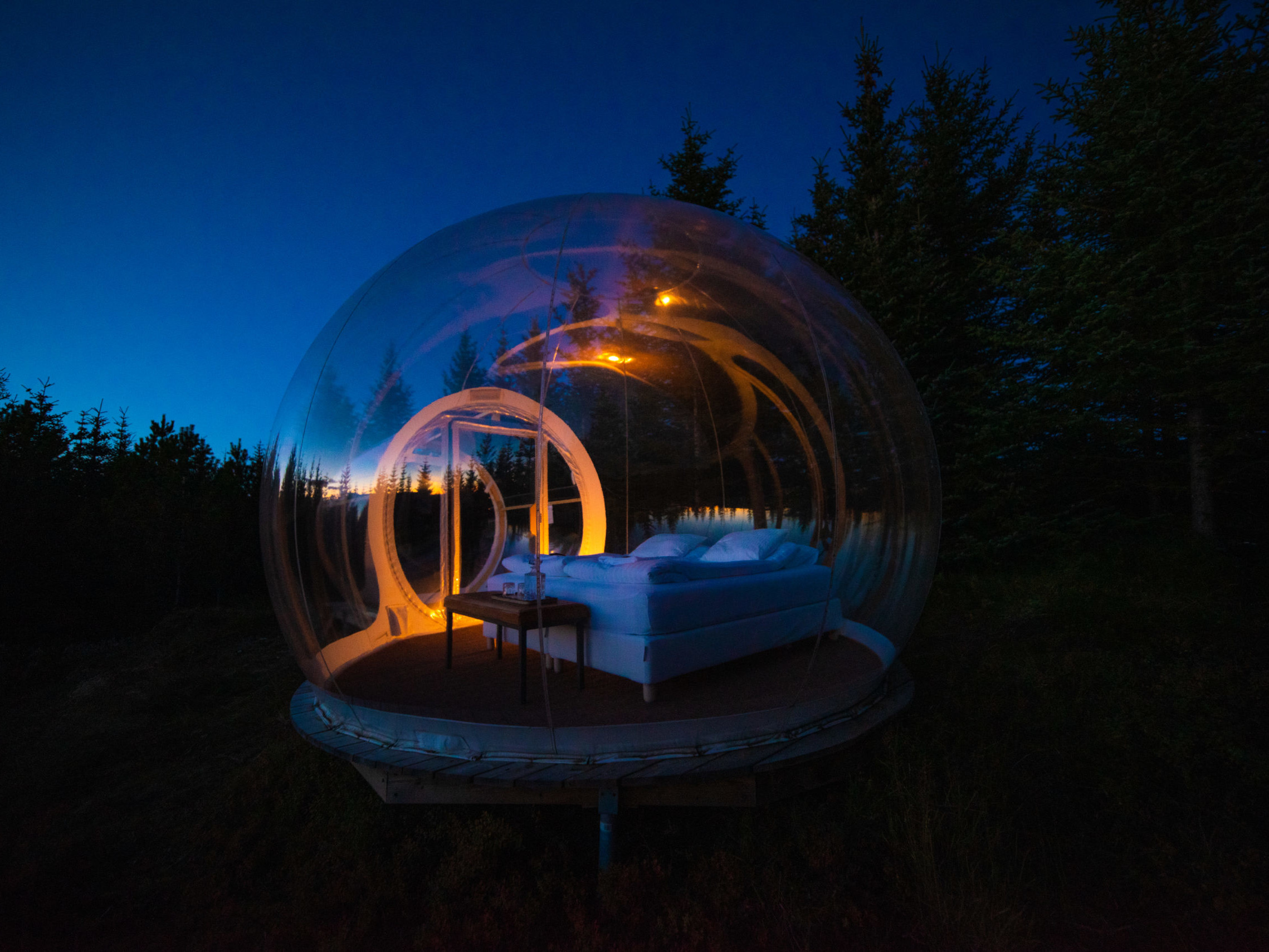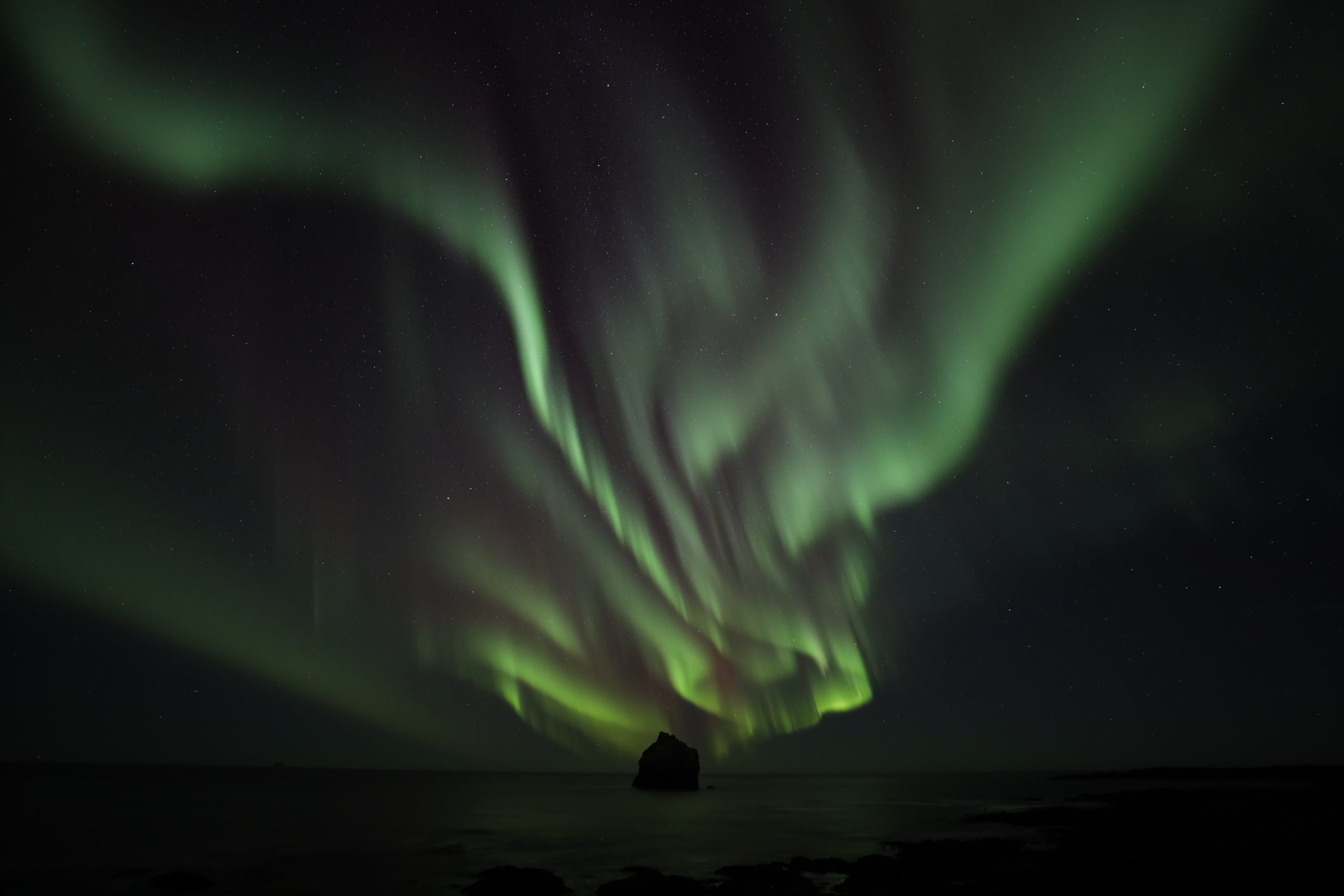Northern Lights Painting...and 5 other fun things to do when the lights aren’t out
We spend a lot of time looking for auroras, but what do we do when we can’t find one? Fellow hunters, meet northern lights painting.
Northern lights painting may not be the first thing you think of when you pack your bags for a hunt. (And it might mean something different to different people! Don’t worry, we’ll come back later for the crafters.)
But if we’ve learned anything at all from years of chasing the aurora, it’s how to be prepared for any and all kinds of nights. Whether there’s a show to see, or not.
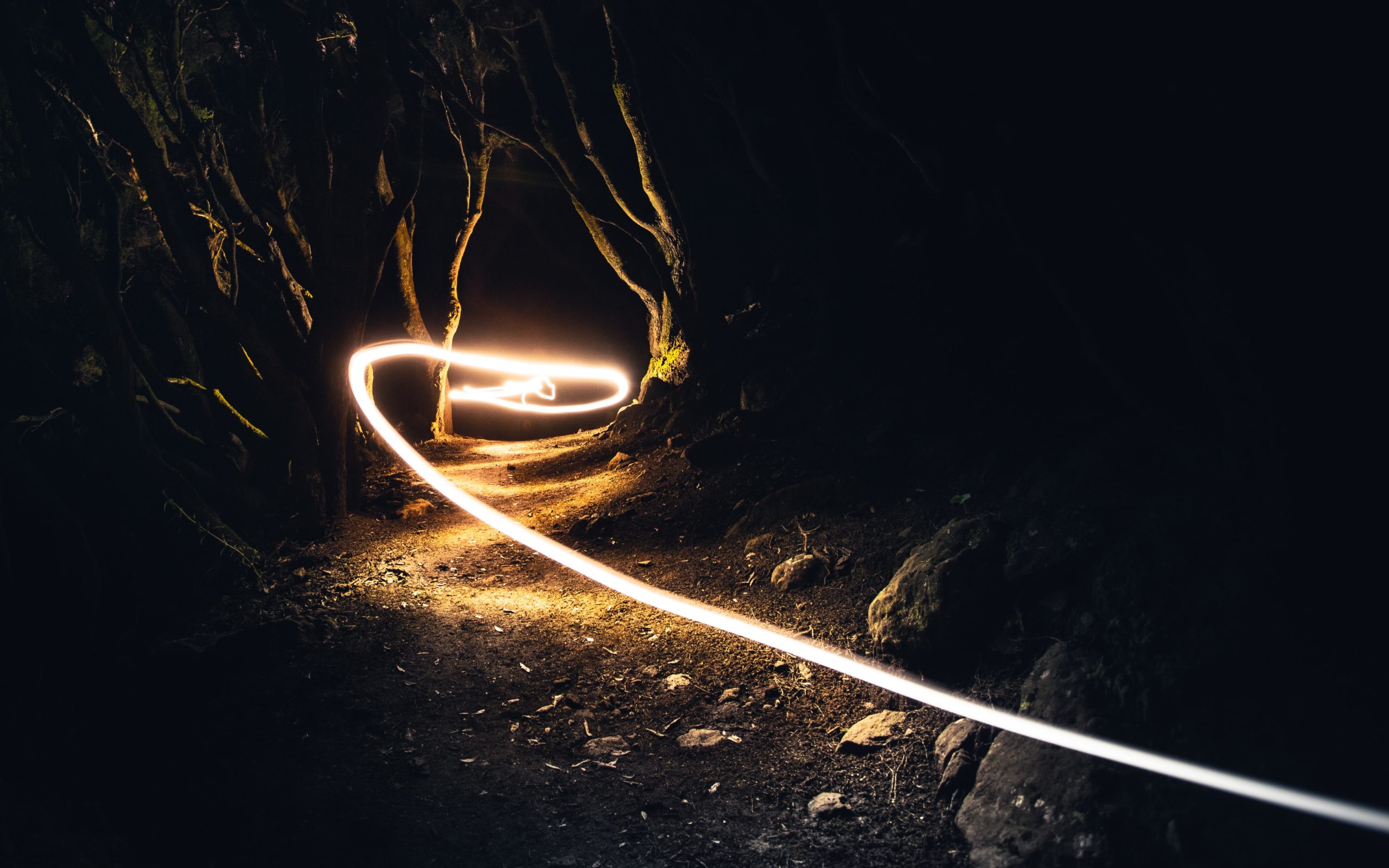
1. Light painting, or, Northern Lights Painting
Known as “Light Painting” or “experimental long exposure photography”, this is the ultimate activity when you’re waiting on the lights to show up. It may not be auroras, but it’s a fan favorite for a dark night with no show.
Popular in its own right, light painting or, northern lights painting, as we like to call it, is an activity that requires a camera. All you need to do this is a DSLR camera or a camera that can accommodate a long shutter setting, a tripod or flat surface, and a light.
This is an experimental process for a reason, and there is no wrong way to do your own northern lights painting. (Well, as long as you’ve got the flat surface and the long shutter. If your camera is moving you’ll have a hard time capturing an image, and if you can’t access a longer shutter, it will be harder to create these effects.)
That being said, this is an activity for people of all levels of artistic skill. The photos you make will look differently depending on where you are, what settings you try, and what tools you use to create light.
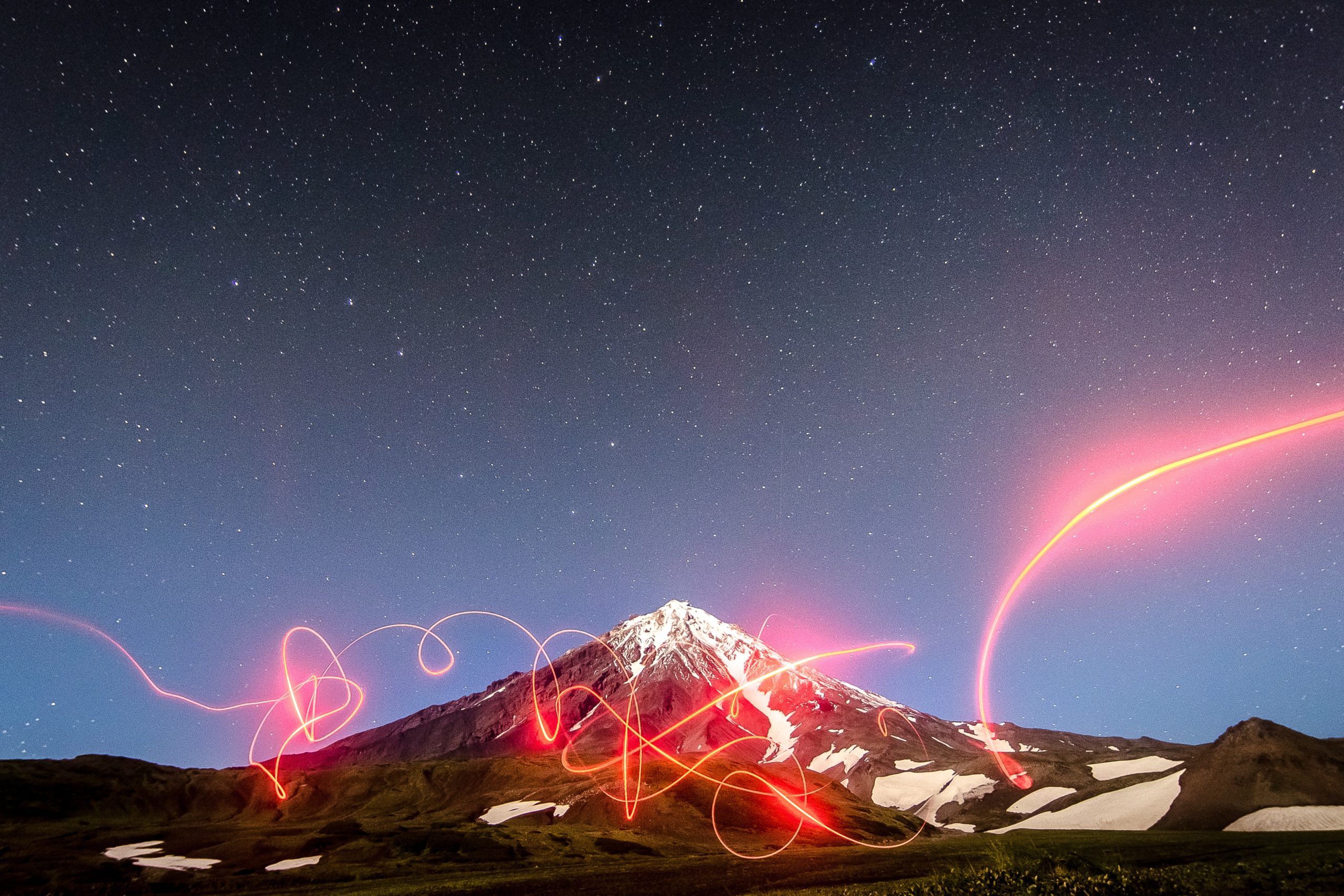
You can even do this inside! (Though, we find ourselves doing this outside most of the time, since we’re always waiting on the aurora to show up.)
Once you’ve got your tripod and your camera set up, you’ll be using a lot of the same settings you’d use for a northern lights shot. This means low aperture, and typically a higher ISO than you’d use for a daylight photo.
(Depending on the effect you’re going for, this could be an ISO as low as 400, and as high as 3600- but don’t take our word for it! This is art, so you’ll have to try different combinations out to see what look works best for you.)
And the key of course, is the extended shutter. Most cameras can accommodate up to 30 seconds of shutter, which is plenty for time for you to create a compelling shape or image. If you find that this is too bright, remember the golden rule of northern lights painting, and adjust till you get the look you want.
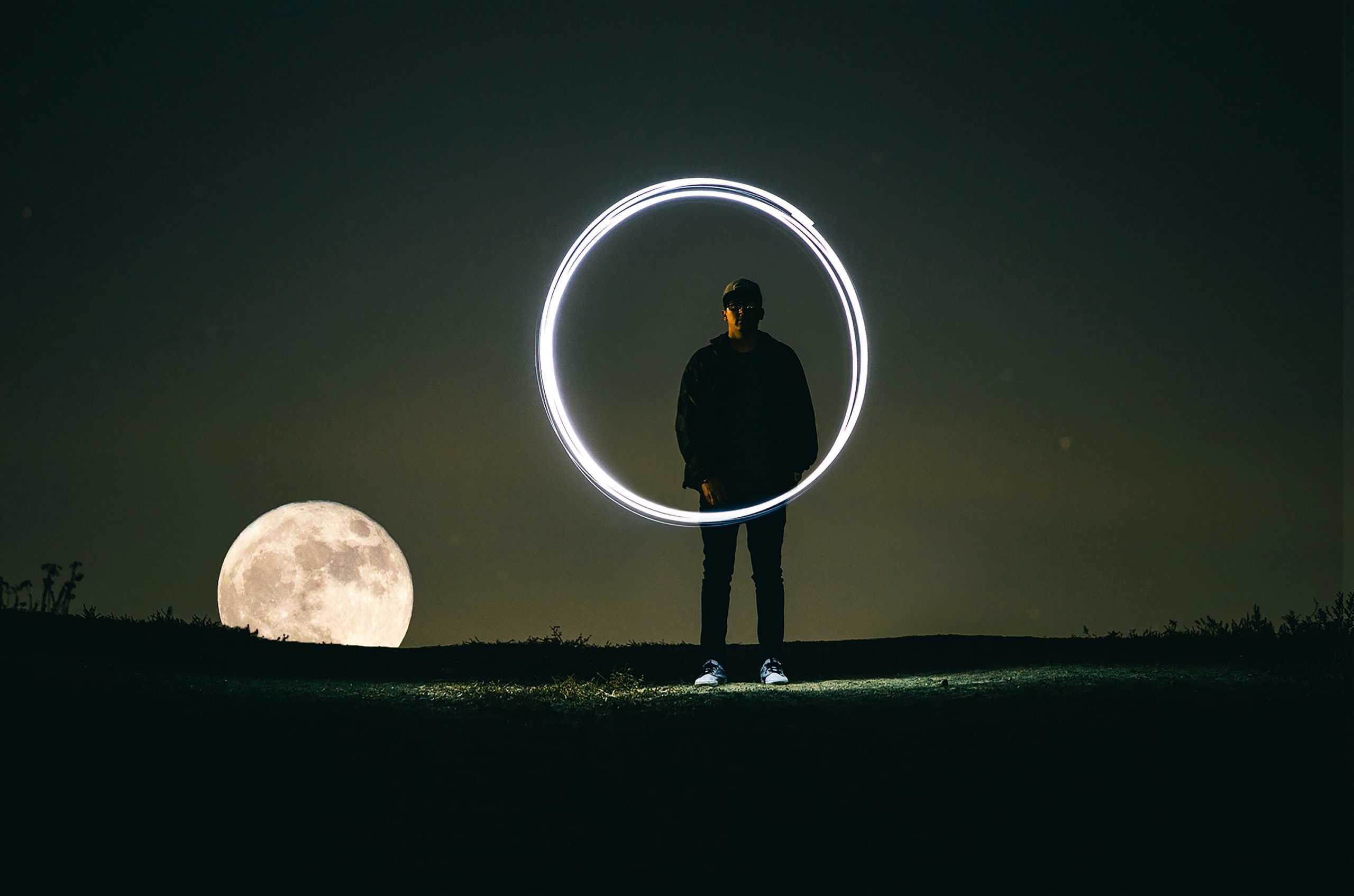
These photos are created by manipulating lit items in the camera’s field of vision. This means you can use fairy lights, mobile phones, torches, sparklers, LED tools, and so on. You can write messages, create three-dimensional patterns, draw shapes- the opportunities are endless. You can make your own aurora! (It is northern lights painting, after all..)
This is a great activity whether or not the lights are out, and we suggest checking out the work of other light painters. There are a lot of opinions on the best types of light, how to diffuse light with tracing paper, and how to color white light with plastics.
There are also countless tutorials on how to make the tools themselves, in order to achieve certain looks. (We are big fans of the long piece of wood with fairy lights taped to it.) If you choose to go the sparkler route, be careful!
Activities like this can spark dry grasses and create wildfires. Make sure you are operating in a damp area, and practicing fire safety while you work. No photo is worth an accidental blaze.
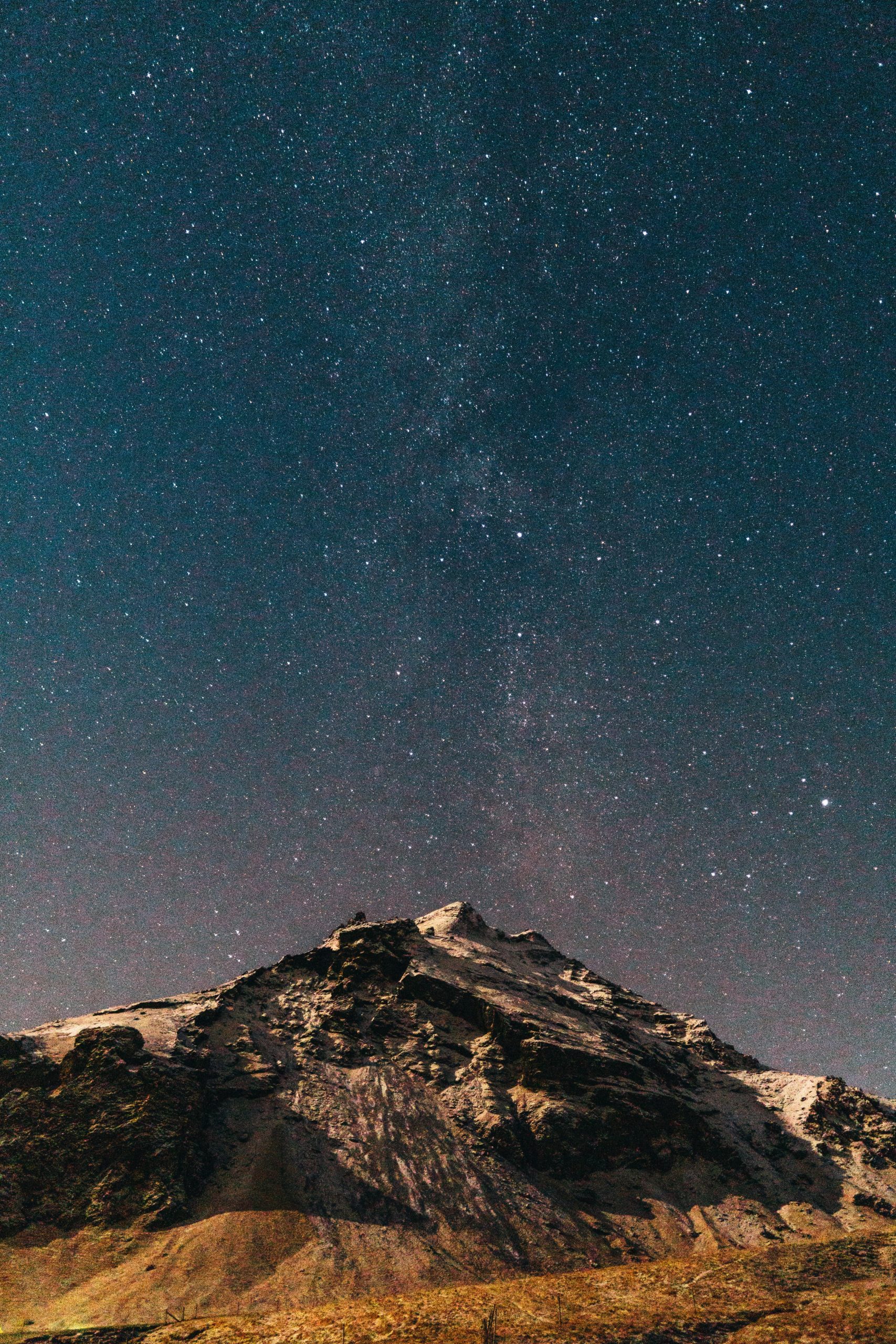
2. Stargazing and Telescoping out the heavens
Northern lights painting gives us something to do down here on Earth, but what about when we’re back to eyeing the skies?
That’s when it’s time to stargaze. While this activity does require the same clear skies as auroras, it doesn’t necessarily require any special equipment. (But don’t worry gadget collectors- there definitely is some.)
With a little knowledge and a lot of darkness, you can find constellations, planets, nebulas, and all sorts of celestial bodies. One can follow satellites, shooting stars, and even an eclipse or two in the Icelandic sky. (And you ought to make the best of it while you can, because we miss out on nearly ever summer event!)
However, if you want to elevate your stargazing experience, there are a lot of tools that can help you do this. Telescopes, binoculars, star maps, and more apps than you can imagine exist just for this very purpose.
Stargazing is a burgeoning hobby with an incredible community, and depending on where you are- there is likely a whole contingent of fellow gazers that you can learn from and watch with.
There also happens to be a lot to learn, so this hobby may stay with you far beyond an Icelandic holiday. Amateur space weather enthusiasts all over the world are even helping contribute to modern science.
In fact- it was stargazers that helped us understand STEVE. But, it’s a wide world out there. What far off planets or mysteries of the verse are YOU going to discover?
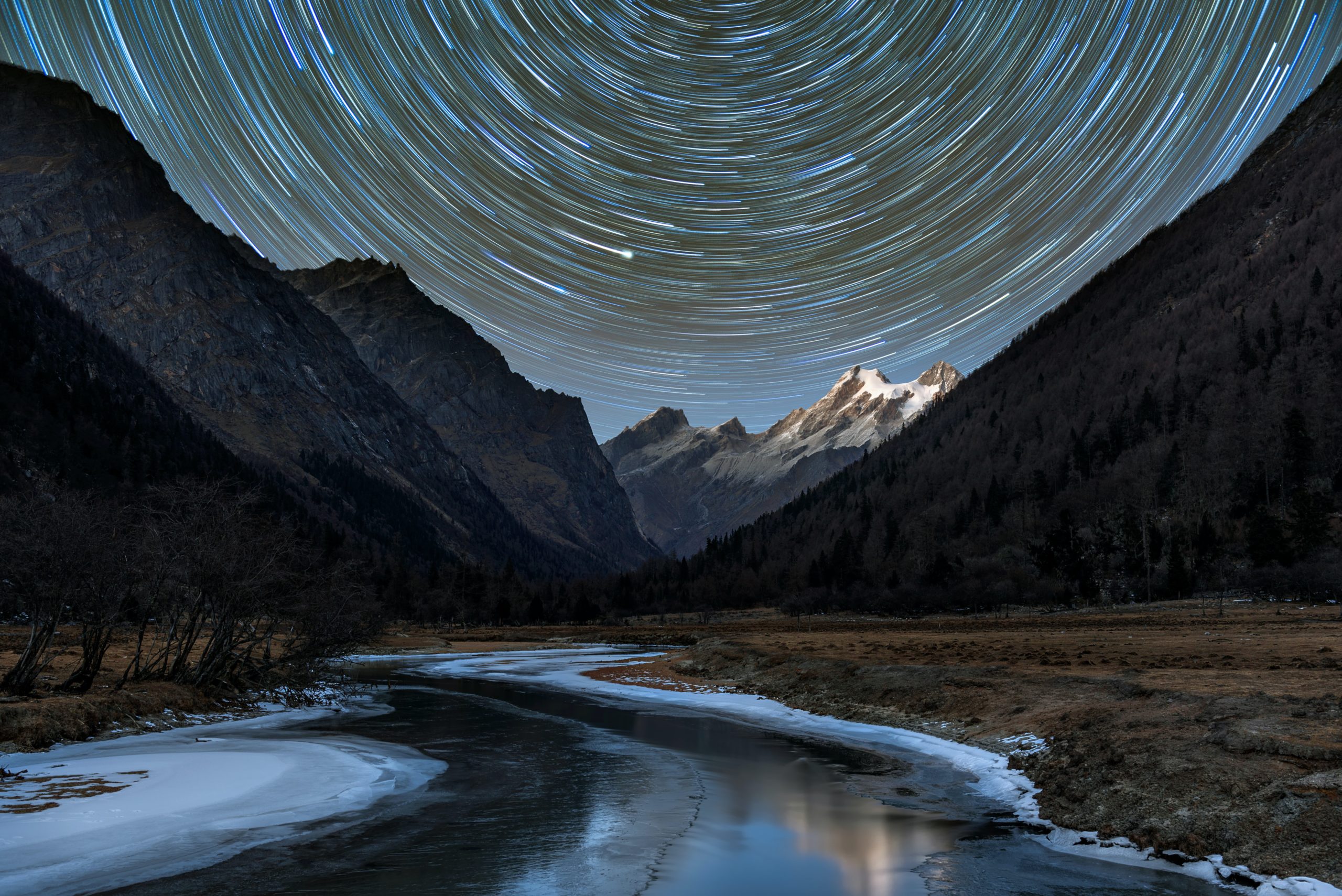
3. Astrophotography, Star Trails and Galaxy Hunts
While stargazing and northern lights painting can both become camera-centric activities, this is definitely one. Many aurora hunters end up becoming photographers out of necessity- because it is just too hard to chase such an ethereal thing and not keep a piece of it for yourself.
Photos are one of the many pieces of the magic, and they are not easily come by. Their rarity and the work that goes into making them is in some ways just as rewarding as the aurora hunt itself.
(Not to mention, a well-timed photo can be a great early detection tool in actually finding the northern lights on a dim evening.)
As many of you know, a great photo is the ultimate souvenir. It’s hard for a t-shirt or a fridge magnet to beat that kind of memento. But what do you do when there’s no aurora to capture?
That’s when we widen our scope even more, to astrophotography. Astrophotography is a big term that includes aurora photos- and about a thousand other things. The reality is that we can access so much more of the sky than we realize.
With the naked eye and our usual context in light polluted places, there’s a lot that we don’t see. But with a great lens (be it in a camera, telescope, or slick pair of binoculars,) suddenly the far rings of Saturn, or the super up close topography of the moon, become easily viewable.
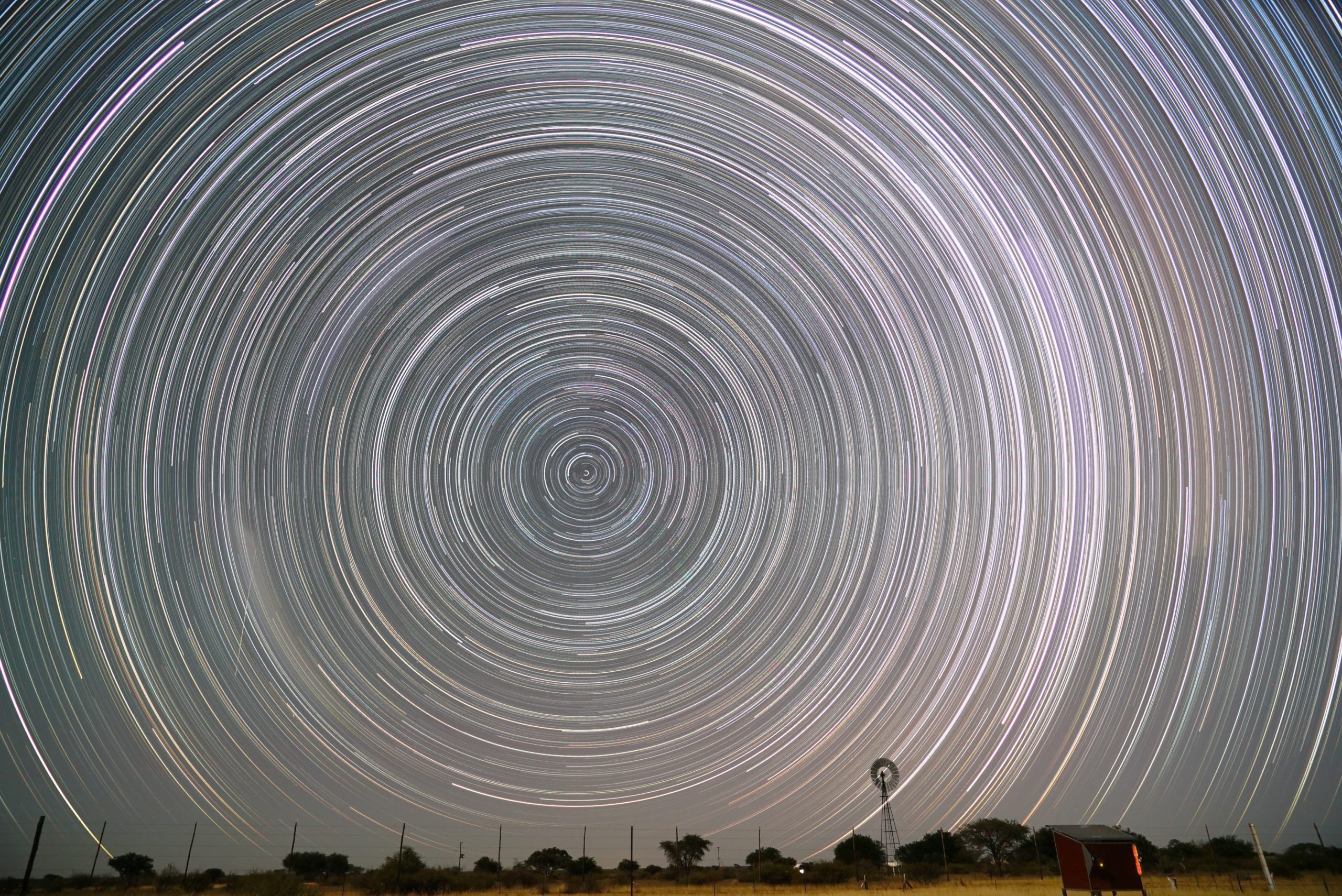
Star Trail images
So after you’ve done your northern lights painting of course, turn your lens to the stars. If you’ve got your tripod and plenty of battery, you can create star trail images by setting your focus to infinity and using the longest exposure you’ve got available to you.
This can be a tricky situation, because you may need to set your camera to the bulb setting, or acquire a cable release for your specific camera model to allow these unusual levels of exposure. (We are talking about 15-30 minute long exposures here!)
But, thanks to aids like Startrails, you can also take shorter exposure images, and the program will layer them together for you. This process makes this type of photography a bit more accessible to the novice astrophotographer, and it cuts down on image noise as well.
This is a special branch of nighttime photography, so have a look around if you’re interested! There is a whole world of star trail enthusiasts, and a million tried and true practices for getting the kind of images you want.
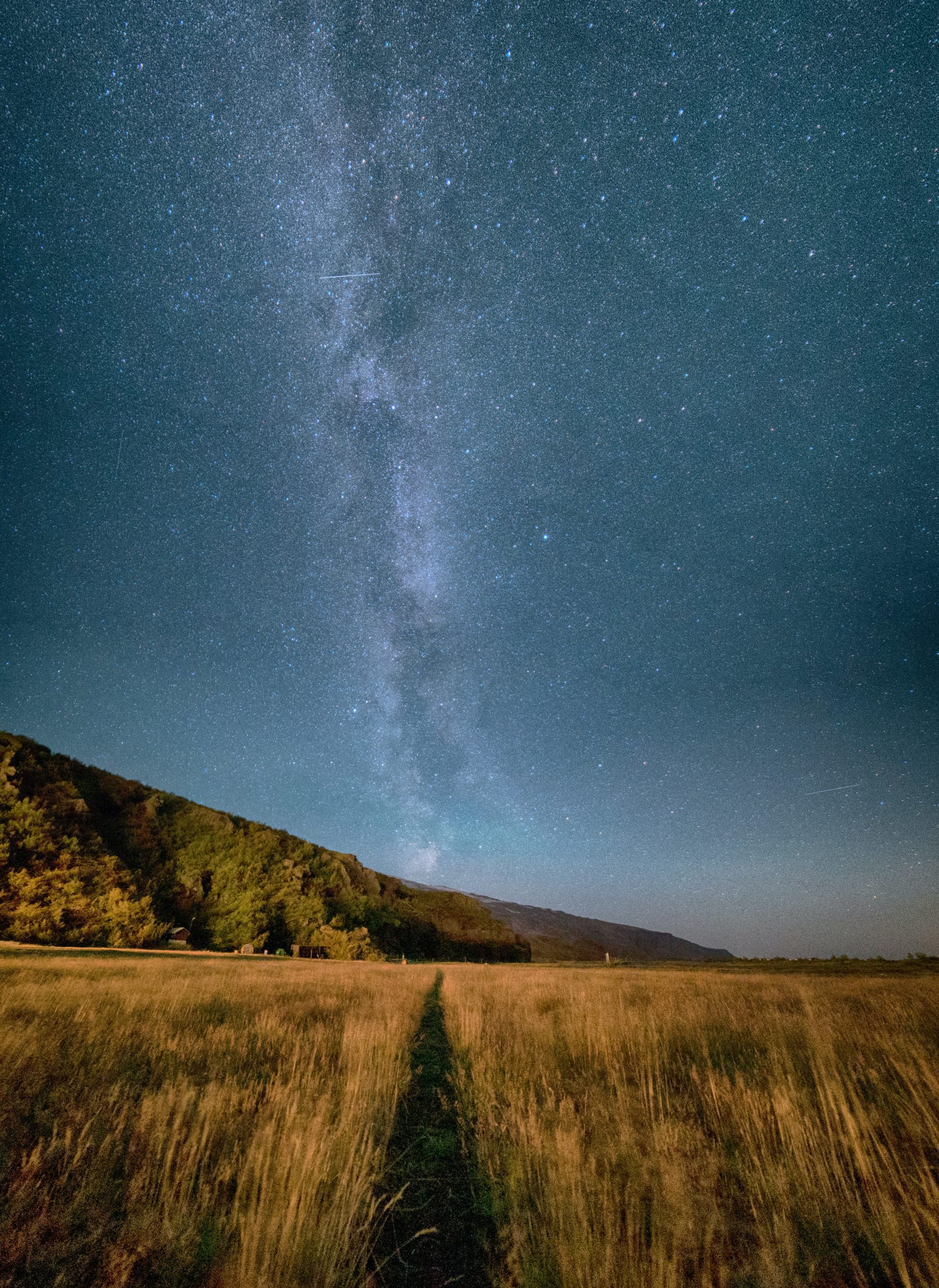
Galaxy Photos
If you’re looking to capture nebulas and far off bodies of celestial light, you may need some specialized gear. Many of these photos are taken with professional attachments and some are even captured through telescope attachments!
If you’ve got a telescope with you and want to venture into that realm of photography, go forth and please send us a copy! We’d love to see it. But for those of you who are trying to capture a galaxy with your DSLR, you may be in luck.
It’s not the easiest, but it is possible. You’ll need a lot of the same stuff you’d bring with you for northern lights photos, so make sure you’ve loaded up your manual capable camera, a sturdy tripod, a fast lens and some patience.
A new item that you’ll need is a starmap app. An interactive map can help you locate the milky way for that evening, which will cut out a lot of the guess work. Above all, you need to be in a dark place. Just like aurora hunting and northern lights painting, light pollution drowns out the good stuff.
Just like the star trail photos, you’ll be working with a pretty long shutter. As you try this out, don’t be disappointed if your photos don’t look quite as outrageous as some of the galaxy shots you’ve seen.
Many photographers in this field are utilizing specialized gear, processes like time blends and startracking, and doing a lot of heavy lifting in a post processing software like Photoshop.
These images are sometimes the product of a great composite job, or a lot of really skillful editing in a RAW image. You can certainly capture a viable shot with your regular aurora gear, but if you’re interested in this- don’t despair! All of these tricks can be learned, and there is ample information on the web to help you. Everybody has to start somewhere.
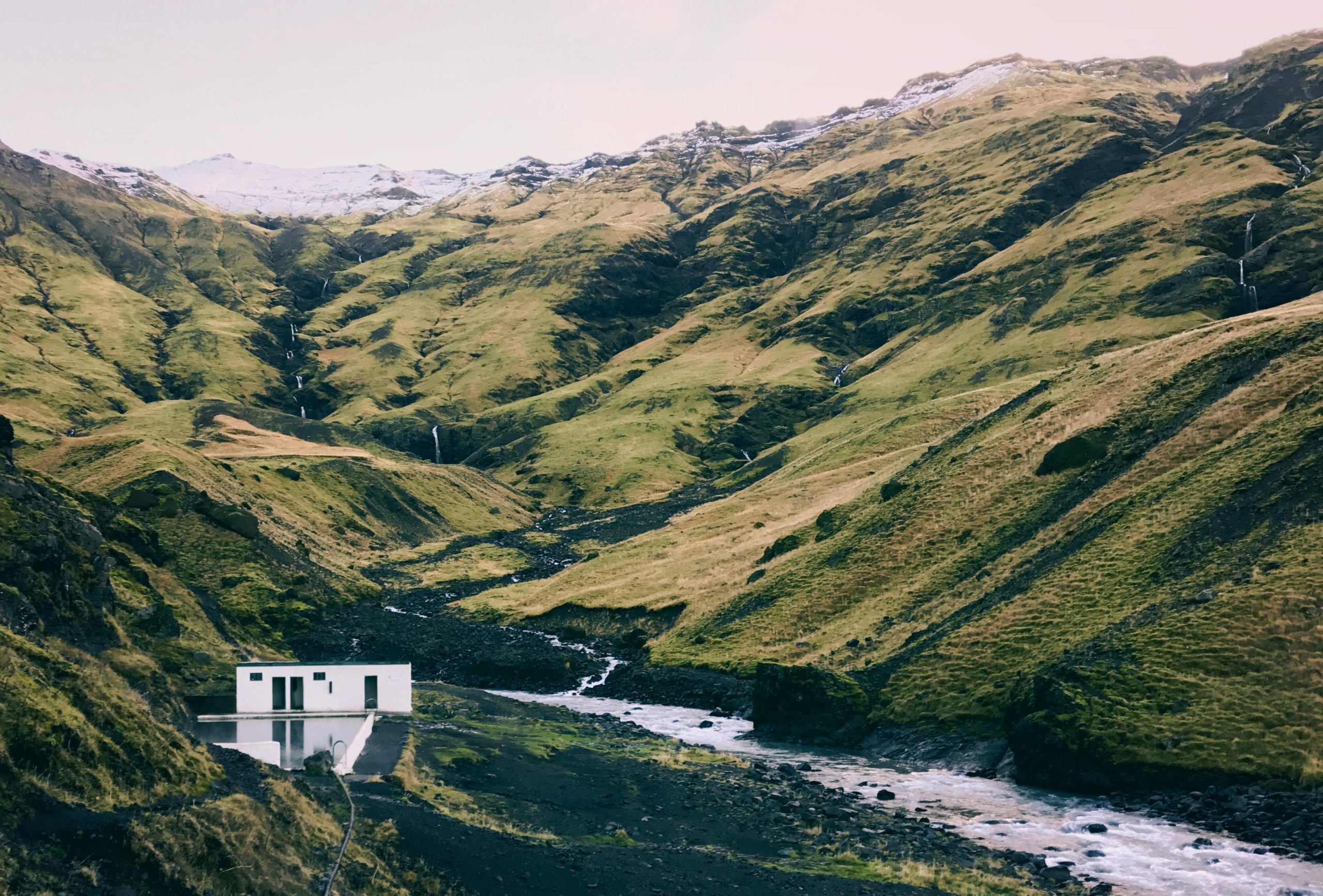
4. Hot spring night soaks
Now here’s an activity that you don’t need a camera for. (Unless you want to make some friends extra jealous.) Half of the time, we’re doing this instead of setting up the cameras- and sometimes the lights come out anyways!
The best seat in the house is always in the hot pot. Iceland’s geothermal landscape is a treasure chest of natural hot springs and great places to soak. But despite that, Icelanders have installed geothermally heated swimming pools in nearly every town, and hot tubs at many summer houses.
If there’s a pool to sit in, we can almost promise it’s heated. (Unless it’s an ice pool, that’s a thing.) If you’re staying in town, there’s a swimming pool near you that is accessible for a low price year round, and if you’re extra lucky, you may have a hot pot in your vicinity.
If you’re a hiker, you can venture forth into a natural hot spring like Reykjadalur, or even Landmannalaugar. If you choose these wilder options, remember to be careful.
Hiking in the colder aurora season and in the darkness is a next level activity, and should only be taken on by aurora hunters that are confident in their trekking skills. Make sure to tell a friend where you’re headed, and bring the appropriate gear.
And check the weather! Some of these natural springs are in mountainous places that experience quickly changing weather and limited visibility, so it’s good to understand the area before you set out.
But if you make it.. Enjoy! There’s nothing in the world like laying in a wild hot spring at night watching nature make its own northern lights painting, just for you.

5. Lay back and pop some Bubbly
As we near the more.. Luxurious end of our list, it feels only right to mention the northern lights igloo option. If the lights are out, this is an incredible option. If they aren’t out, it’s an incredible option. If you’re here in the summer, it’s an incredible option. You can’t go wrong with this activity.
The Bubble Hotel of Iceland consists of a handful of fully transparent domed igloos that are tucked away in the embrace of two lush forests. This means you’ve got two location choices, and all the nature you can handle.
These hideaways are sequestered in their own groves, heated, and outfitted with their own luxury sleeping accommodations. To catch the lights, we often wait outside for long periods of time in the wind, weather, and low temperatures.
But imagine if you could do it wrapped in a down comforter with gourmet treats, in bed? Because of their rural locations, you’ll have all the darkness you need for optimal aurora watching or stargazing.
If you catch the lights out here, there’s no better seat. But if you don’t- you still get to walk away with a night spent in the height of luxury, surrounded by the grandeur of raw Icelandic nature on all sides.
It’s certainly the furthest away you can get from roughing it, while still being right in the middle of the woods. So excuse us while we slip into something a bit more.. Comfortable.
The best place to see Northern Lights in Iceland: 10 of the most magical spots for aurora watching and stargazing
No matter how many times we’ve seen the aurora, we’re always looking for the best place to see northern lights in Iceland.
We never stop looking for the best place to see northern lights in Iceland. From the far reaches of the west, to the lush forests of the east- it is impossible to count them all. Iceland may be a small island, but the hidden treasures here are many. Where was the best place you watched the sky from?
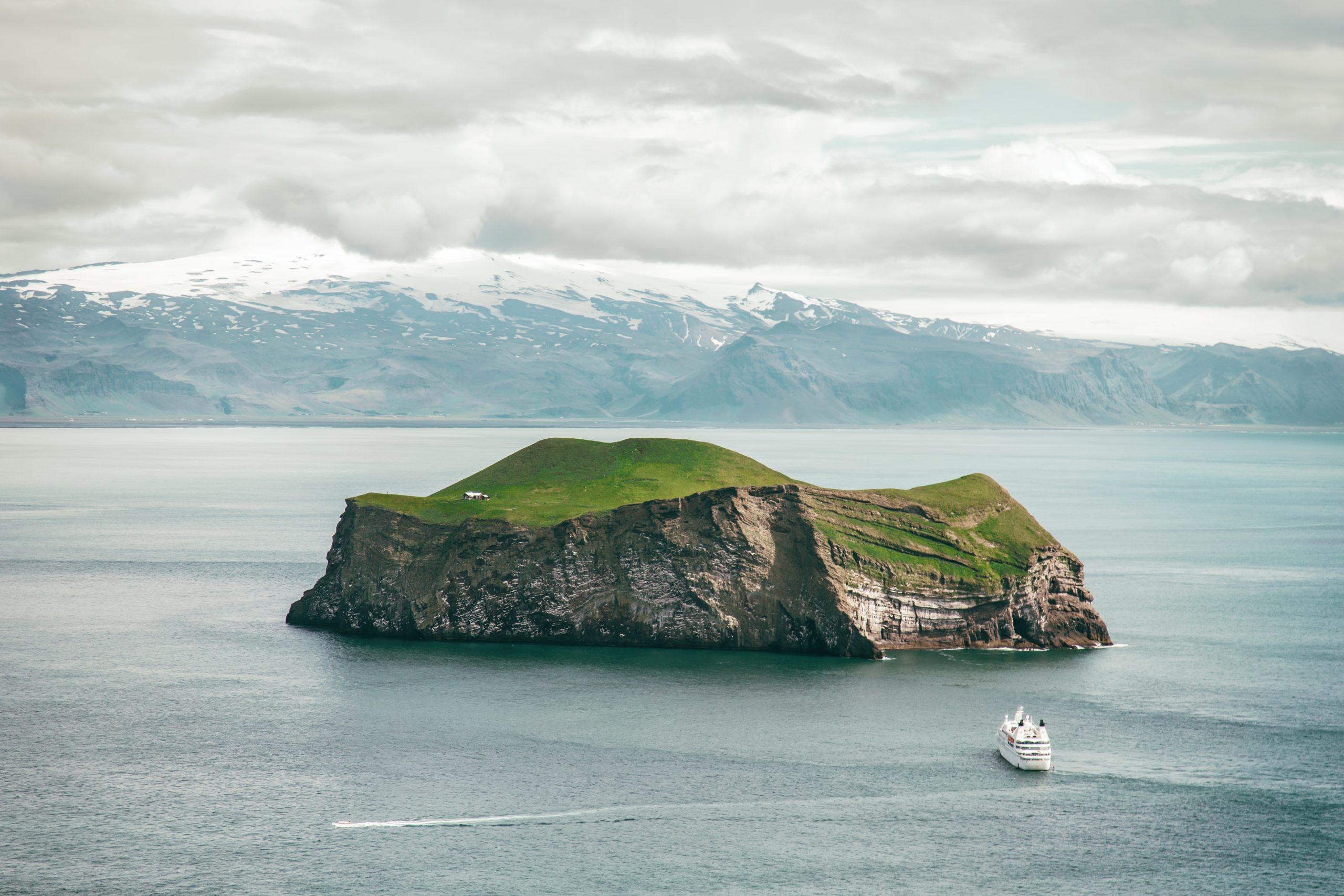
1. Vestmannaeyjar
Vestmannaeyjar, or The Westman Islands, lie right off of Iceland’s south coast. Accessible by ferry or plane, they are an often overlooked gem and in our opinion, a best place to see northern lights in Iceland.
The Westman Islands are a self-contained world all to themselves, and boast some of the warmest annual temperatures in the entire country! Benefitting from the gulf stream, they are known as a wildlife-rich area that enjoys plentiful fishing, whale and birdwatching, and music festivals and sport in the summer.
A visit to the Westman Isles is punctuated by incredible sights. Lighthouses on rock stacks, one of the most famous volcanic eruptions in modern history, vast sea caves, and a whole chain of gorgeous, uninhabited islands. And being far south, one of the last places to catch the lights at the end of the auroral season.
Many great country aurora spots are remote, but here in Vestmannaeyjar you’ve got everything you can think of within a few kilometers. Including some of Iceland’s most notable golfing and dining!
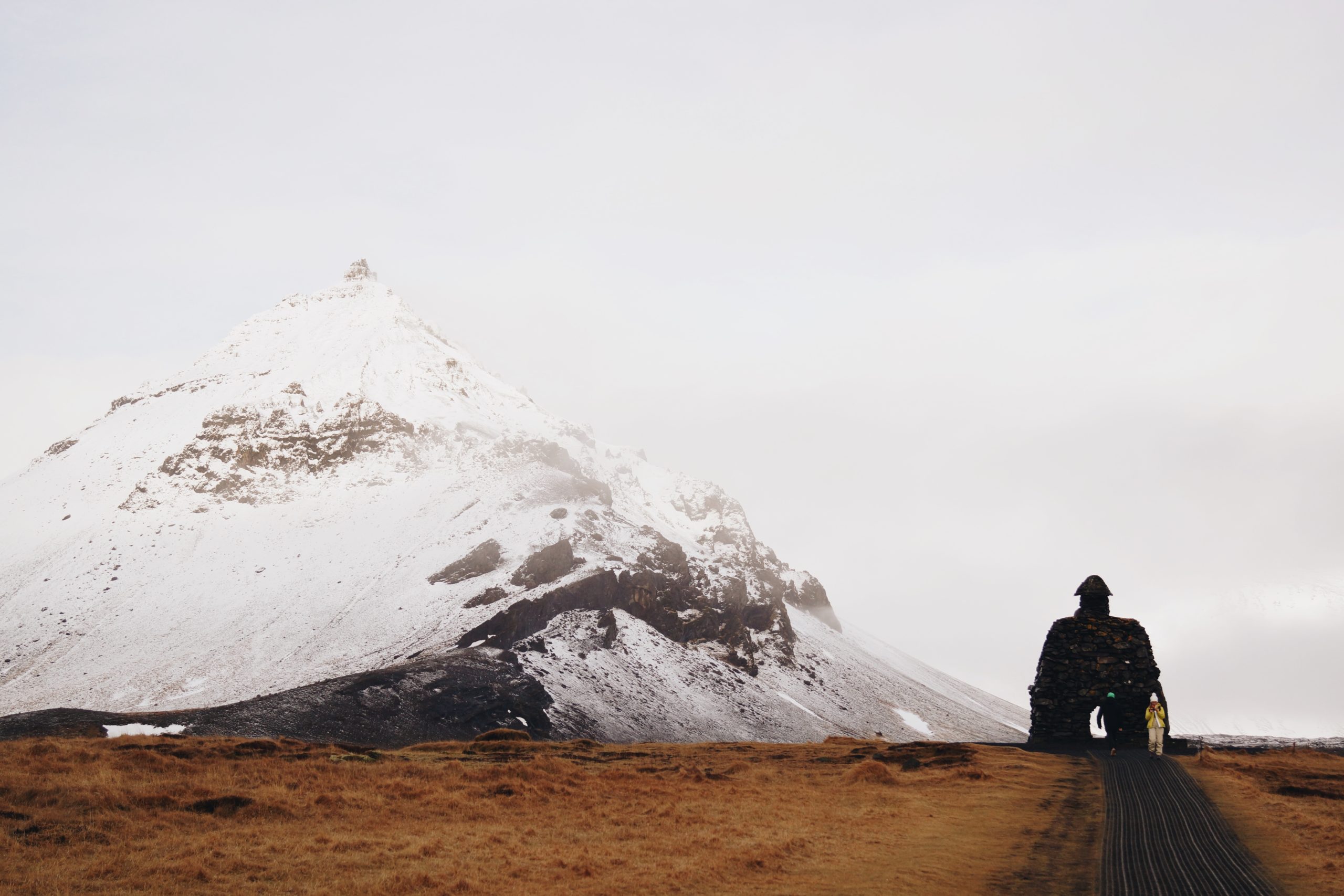
2. Hellnar in Snæfellsnes
The peninsula above Reykjavik is known as Snæfellsnes. A place that enchanted Jules Verne and featured in many historical Saga tales, Snæfellsnes became an EarthCheck community in 2008.
Truthfully you could travel the whole of the peninsula, and find thousands of good aurora spots. This is not a heavily populated zone, and during the day it is a phenomenal sightseeing location.
But we’re spilling the details on our favorite spots, so Hellnar has to make the cut! An ancient fishing village for many generations, Hellnar is perched on the tip of the peninsula overlooking the curved basalt coastline and the thundering sea.
People come from miles around to seal and whale watch, enjoy the varied geology of the area and view the countless natural landmarks in peace. You can travel quietly here, and enjoy the high-quality darkness of this northerly locale.
When in Hellnar, one can nearly imagine what it might have been like in centuries past- a bustling destination under a slumbering volcano.
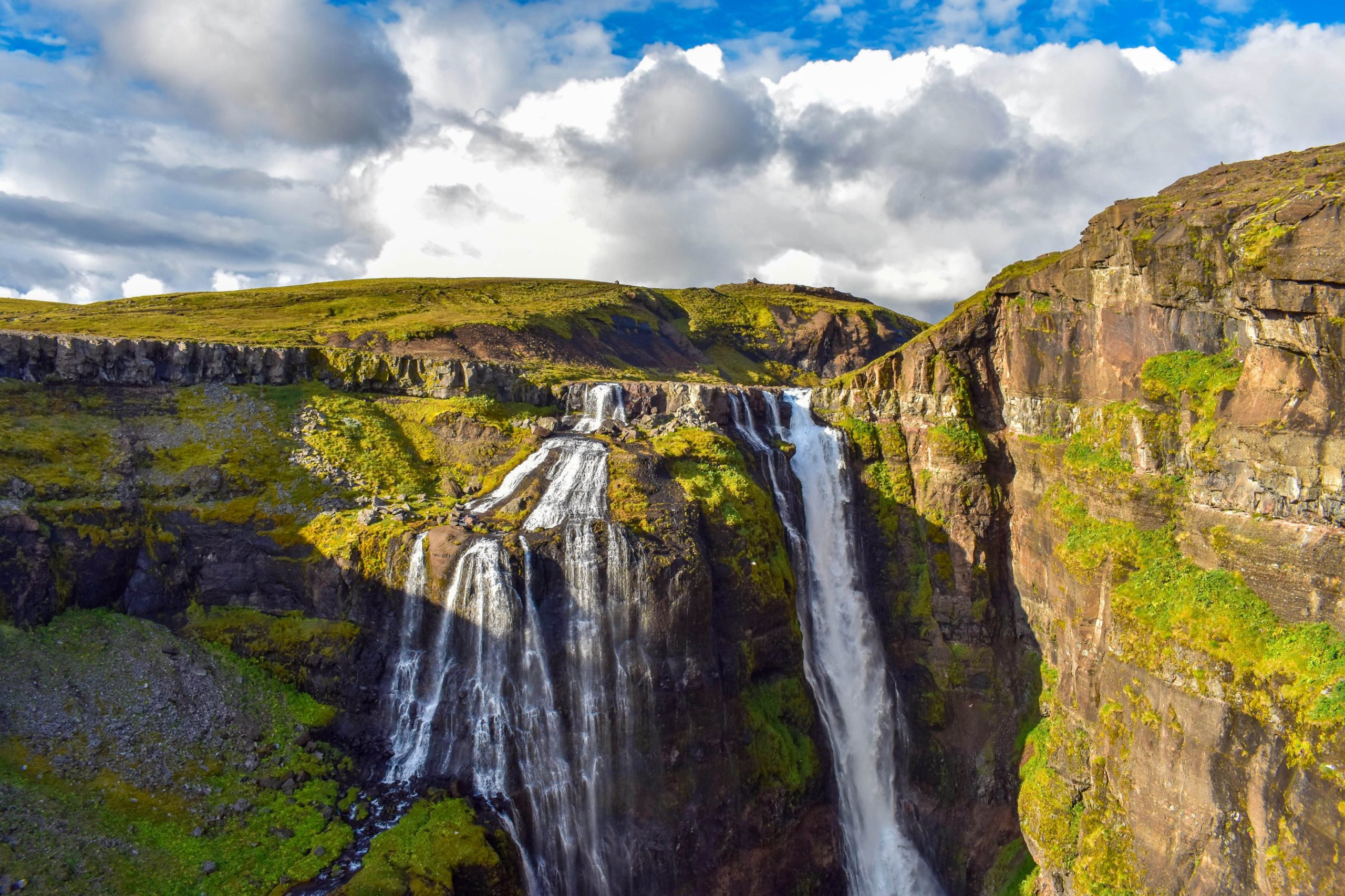
3. Hvalfjörður
Just outside of Reykjavik lies a hidden treasure off the main road. Hvalfjörður is the name of the fjord that lies between Mosfellsbær and Akranes. A short trip from the capital city, Hvalfjörður is home to many small waterfalls and hiking paths.
The popular trek to Glymur starts here, and many coastal hikes as well. The fjord itself is 30 kilometers long and there is not a stitch of it that does not house some kind of tiny wonder. Often passed over for more notable climes, this is a calm and beautiful place to aurora watch, with multiple marked observation points that are safe to park in.
Great for some daytime and evening hiking while you wait, the textured vistas and low traffic certainly make Hvalfjörður feel like the best place to see northern lights in Iceland.
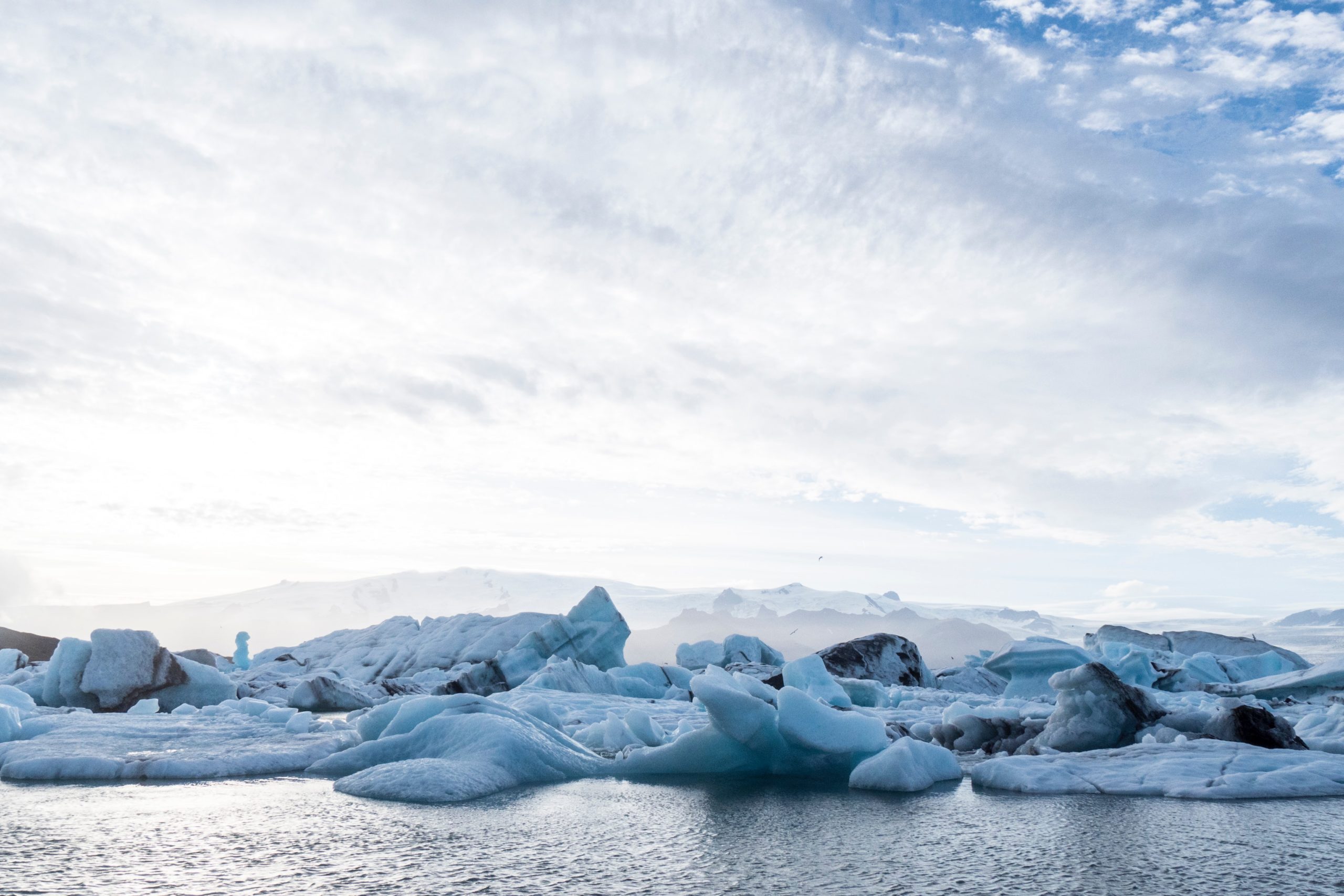
4. Jökulsárlon and Fjallsárlón
You have likely already seen Jökulsárlon on lists like these, and it is admittedly hard not to include it. One of the most dramatic glacial lagoons on the island, Jökulsárlon feeds out to sea across a black sand beach littered with giant chunks of ice.
Watching the huge pieces of ice swirl in the surf as if weightless, is a close competitor for the northern lights. But what about nearby Fjallsárlón? Only about 10 kilometers west of well known Jökulsárlon, lies this smaller more intimate lagoon.
Spectacular during the day, at night the lagoons can provide gorgeous reflection photos for aurora hunters and stargazers alike. Time spent next to these otherworldly spaces is special and fleeting.
They are truly impermanent and no repeat visit to them will ever feel the same. All the better reason to hurry- both the lights and the ice do not keep.
Tip: When visiting these spaces, be extra careful around the water and the ice. It is tempting to hurry forth and touch, but the calving of the glacier is unpredictable and can create impressive waves. The ice left on the beach is easily moved by the ocean, and just like the lagoons, can be dangerous up close. (What looks light in the sea, may feel rather heavy when dropped on your feet!)
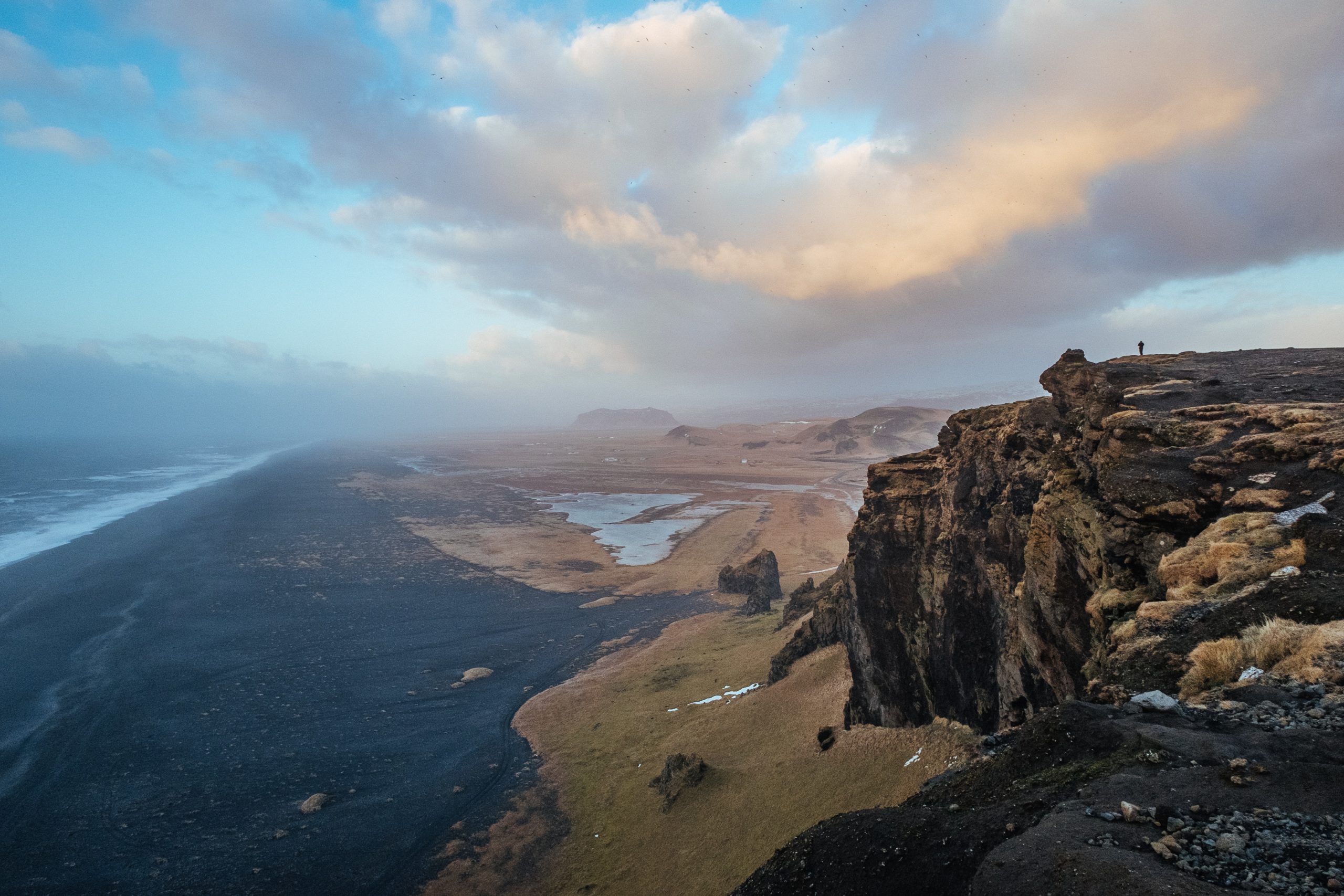
5. Dyrhólaey
Near the coastal village of Vík, there’s a promontory called Dyrhólaey. Named for the arched holes in the rock- or “door holes”, this is another ever-changing gem of the island, not to mention the southernmost point of the mainland! Featuring multiple paths, Dyrhólaey is a paradise of vistas.
There are many famous shots to be had here, and hardly anything to get in the way of them. An easy jaunt from the nearby village, Vík is a great refueling stop for explorers of this area. The south coast is punctuated by black sand beaches, huge basalt sea caves, and towering cliff waterfalls.
There are even northern light igloos that one can hide away in, which makes the south coast in general a great choice for the best place to see northern lights in Iceland.
Tip: Mind the pathways and signs when visiting this area. Dyrhólaey is changing, and pieces of the landmass are sometimes lost to the sea. Places that are roped off are roped off for a reason.
Check any signage you see before you hike out, as rangers in the area often update it due to shifts in the conditions of the land.
The ocean around this area is fierce and has claimed many lives. When visiting the shoreline, keep your distance from the waves- this beach is known for “sneaker waves” and unforgiving currents.
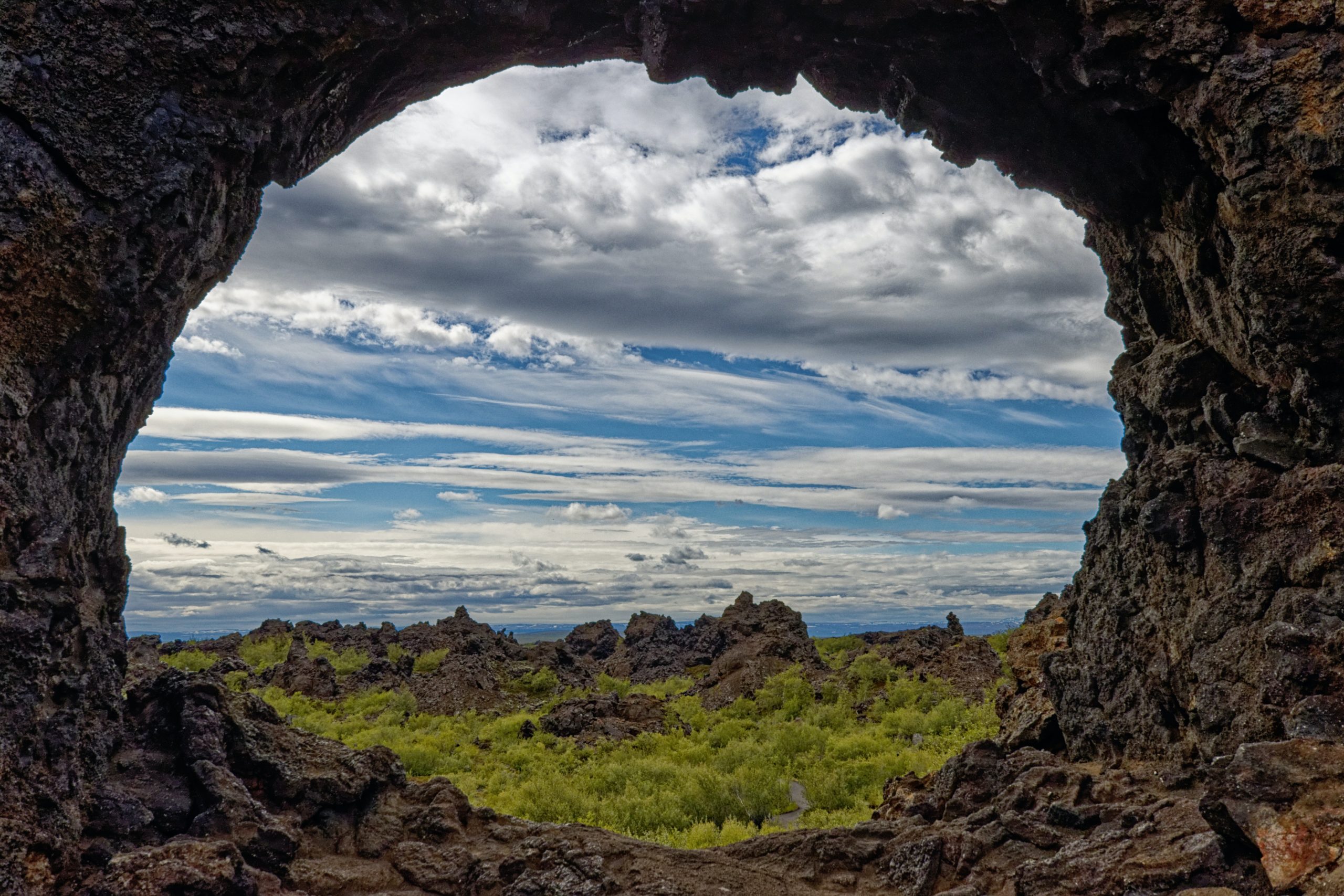
6. Dimmuborgir
In the north of Iceland near Mývatn, lie the dark castles. Otherwise known as Dimmuborgir, this strange lava field has captured the eye of many, from Norwegian metal band Dimmu Borgir, to the wildlings of Game of Thrones.
Characterized by the unusual rock stacks and tunnel formations, Dimmuborgir is a place of many stories and beliefs. But, regardless of what you believe, it is a shoe-in for best place to see northern lights in Iceland.
Being located in the picturesque Mývatn region, the dark cities overlook miles of great lakeside hiking and some of the north’s best geothermal bathing. For amateur and expert photographers alike, the craggy peaks of the lava and the still waters of Mývatn make incredible photos against the bright colors of the auroras.
Between the breathtaking natural wonders and the nearby amenities, it’s hard to find a better spot!
Tip: Visit this place during the daytime to familiarize yourself with the terrain. Mývatn may not be hugely difficult hiking, but these rocky areas can be challenging to navigate for the first time in the dark. Double up on your protection by bringing a headlamp or torch- extra points if it’s a red light for night vision preservation!
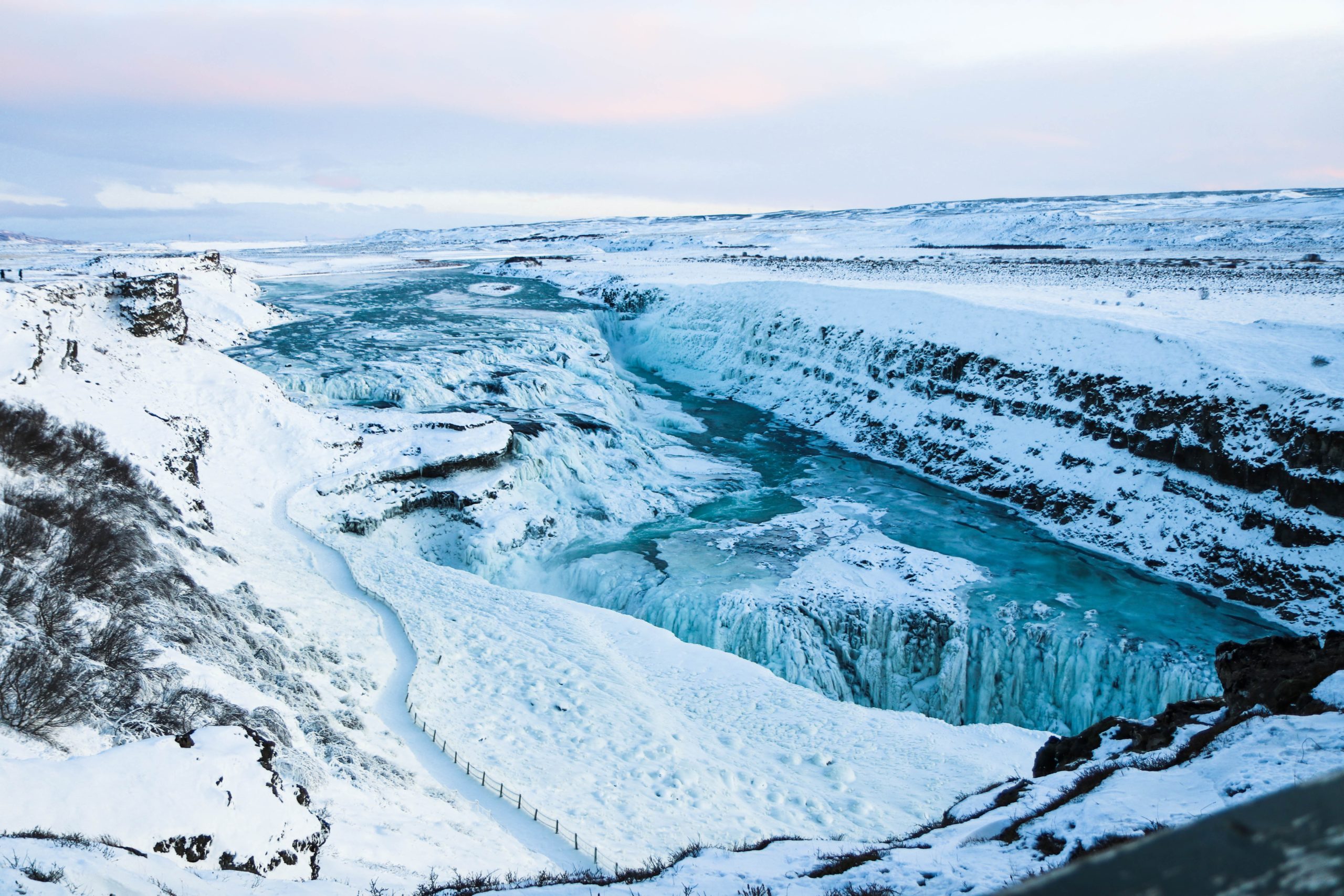
7. Gullfoss
Imagine reclining on a bench watching the northern lights, while a waterfall rumbles nearby. Doesn’t get any more peaceful than that! On our hunt for the best place to see northern lights in Iceland, we had to include a waterfall. Iceland is simply riddled with these gifts of nature, and Gullfoss is a big one.
Named for its golden illuminated appearance in the daytime, what is even more spectacular is the light that hits it in the nighttime. About 1 hour and 45 minutes from Reykjavik, Gullfoss is a protected area that hosts observation points, walking paths, and a parking lot with a cafe.
It’s rare to find a good aurora spot with a safe place to park your car, so spots like these should not be overlooked. The golden circle region is a great daytrip, and the roads are well maintained in the winter months.
Tip: If you plan on visiting the cafe or shop on your trip, make sure to check ahead and see what the hours are. These things can vary depending on the season, so it’s better to go in with no surprises. (Or at least one less- the lights are a big enough surprise on their own.)
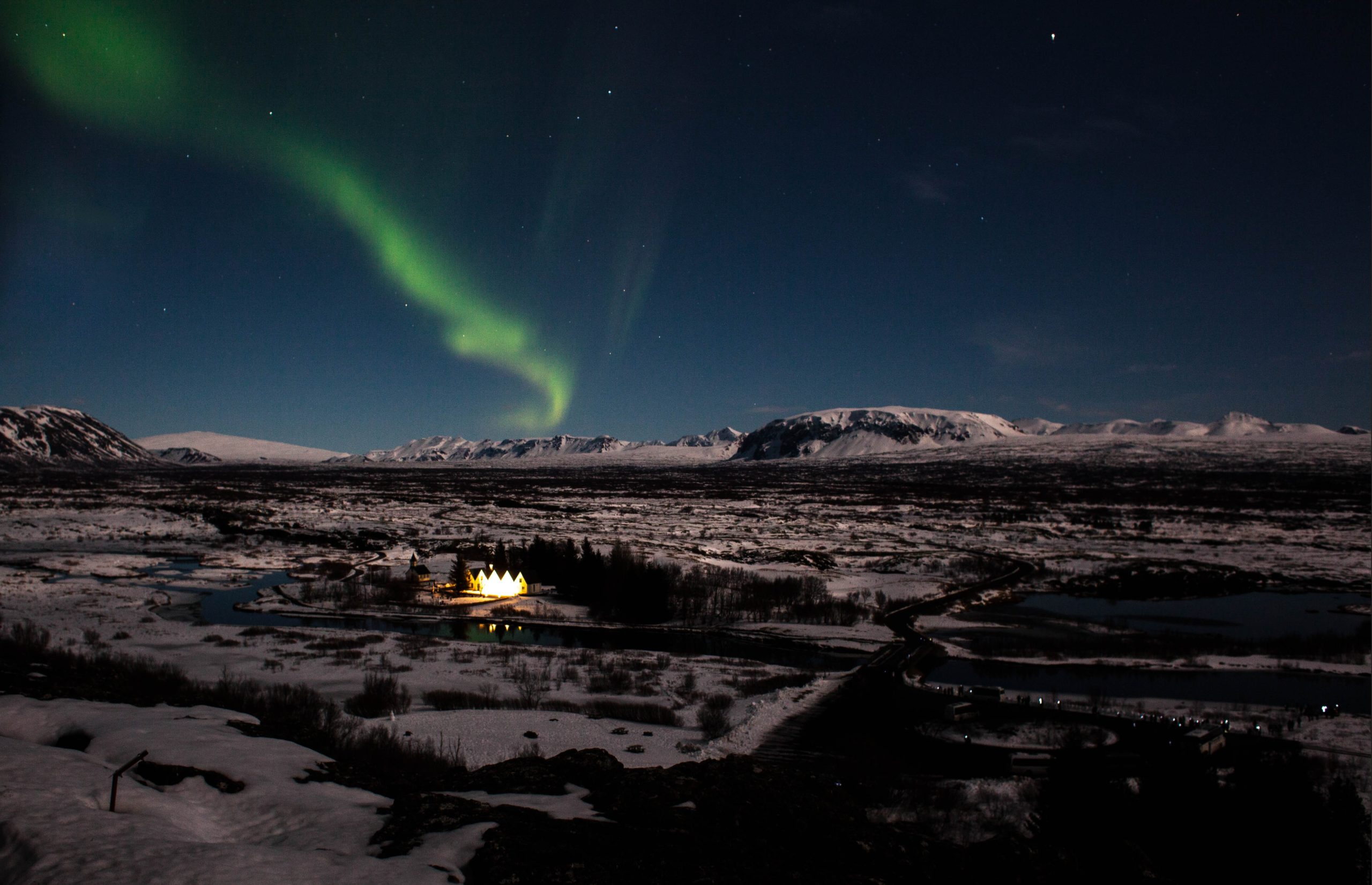
8. Þingvellir National Park
Only about 35 minutes from the capital, Þingvellir or Thingvellir should be on the top of your list for best place to see northern lights in Iceland- no matter where you’re staying. Once upon a time, Thingvellir was the most important gathering point for Icelanders, and it isn’t hard to see why.
Home to a massive lake, miles of hiking, and incredible views- Thingvellir is a place of activity. It’s also one of the places where you can see the continental rift! But as far as lights go, it’s a veritable playground.
When you’re out aurora hunting, you have to consider logistics. Things like places to park, places to get a snack, bathrooms, proximity to lodging, access to darkness, and so on. Most places will only have a few of these, but Thingvellir hits them all.
Being a national park, it’s designed to accommodate vehicles and wanderers. There are loads of paths to travel, established hiking routes, and plenty of parking lots and observation points to safely stow a vehicle.
This is a big win, because Iceland is full of narrow roads with few places to pull over for a show. Thingvellir is also aware of us aurora hunters, and so there are occasionally places to grab a coffee or a bathroom break along the way.
(Depending on how late you’re out, of course. Double check this before you go if it’s your destination.) You’re also in a great spot when you’re here. Thingvellir is just a half-hour north of Reykjavik, and rests at the entrance to the Golden Circle region. (Or exit, if you came the other way!)
And even though you’re close to town, you will find that Thingvellir is home to some surprisingly good darkness. Because of its inland location and its historical importance as a gathering point, it’s well-positioned on the edge of the highlands.
And there’s tons to do! The only mistake you can make by aurora hunting here is to skip visiting in the daytime. In the autumn, Thingvellir is a rainbow of foliage.
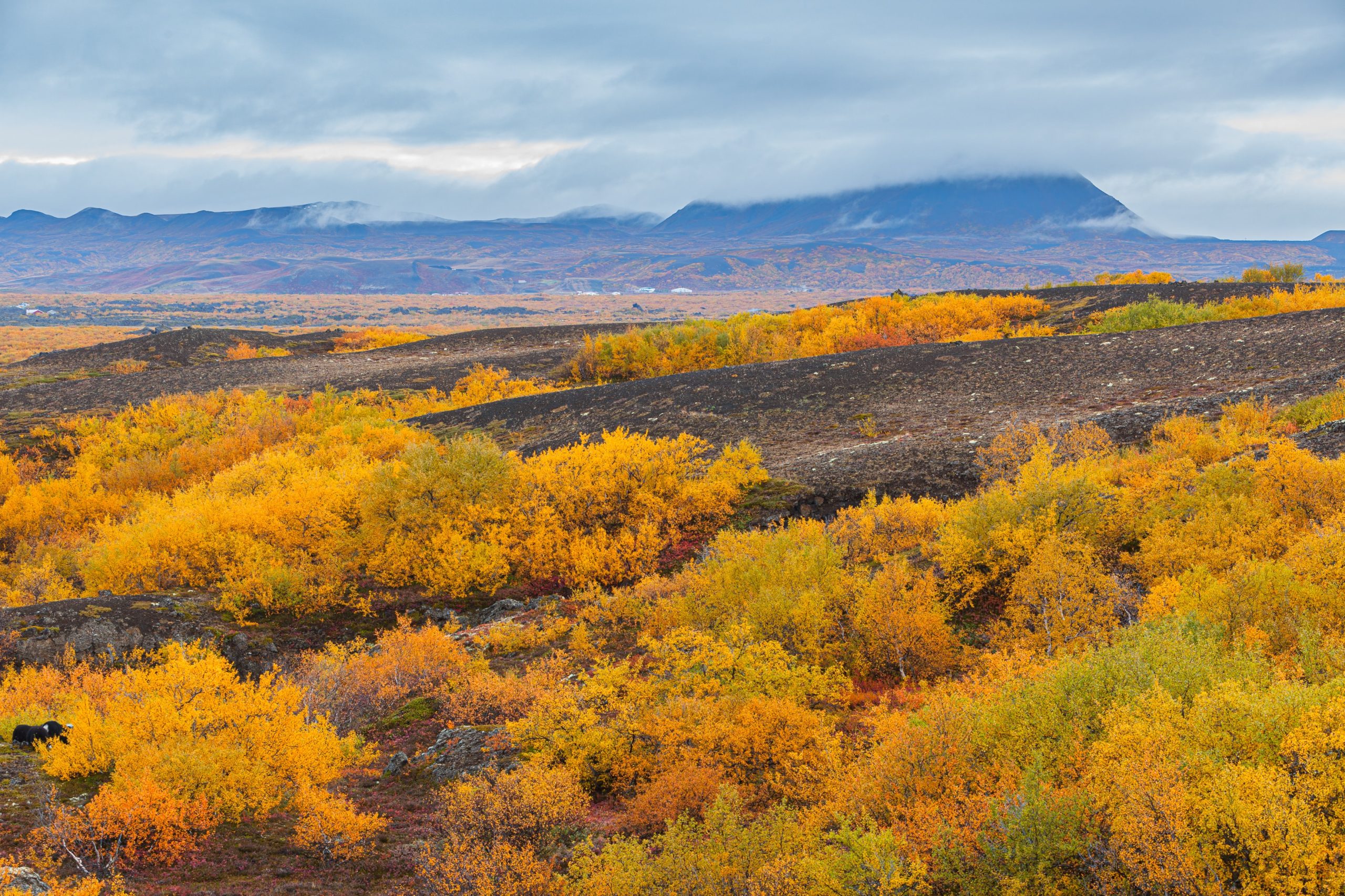
9. Ásbyrgi
This is a rarer stop in the north of Iceland. Located on the Diamond Circle, Ásbyrgi is a horseshoe-shaped canyon that some believe was made by a glacier.. But really we know it is where Sleipnir touched hoof to Earth.
The views to be had here are unique, as the steep walls of the canyon protect a vast forest within their embrace. Because of this “Shelter of the Gods”, Ásbyrgi is an incredible place to visit in the autumn months to catch the color changing of the leaves, and the crystal pond among them.
There is a campsite here, and multiple trails to enjoy all the different views that the huge canyon has to offer. But be careful while you’re here- to us this may be the best place to see northern lights in Iceland, but to some it is the elven capital. Tread lightly!
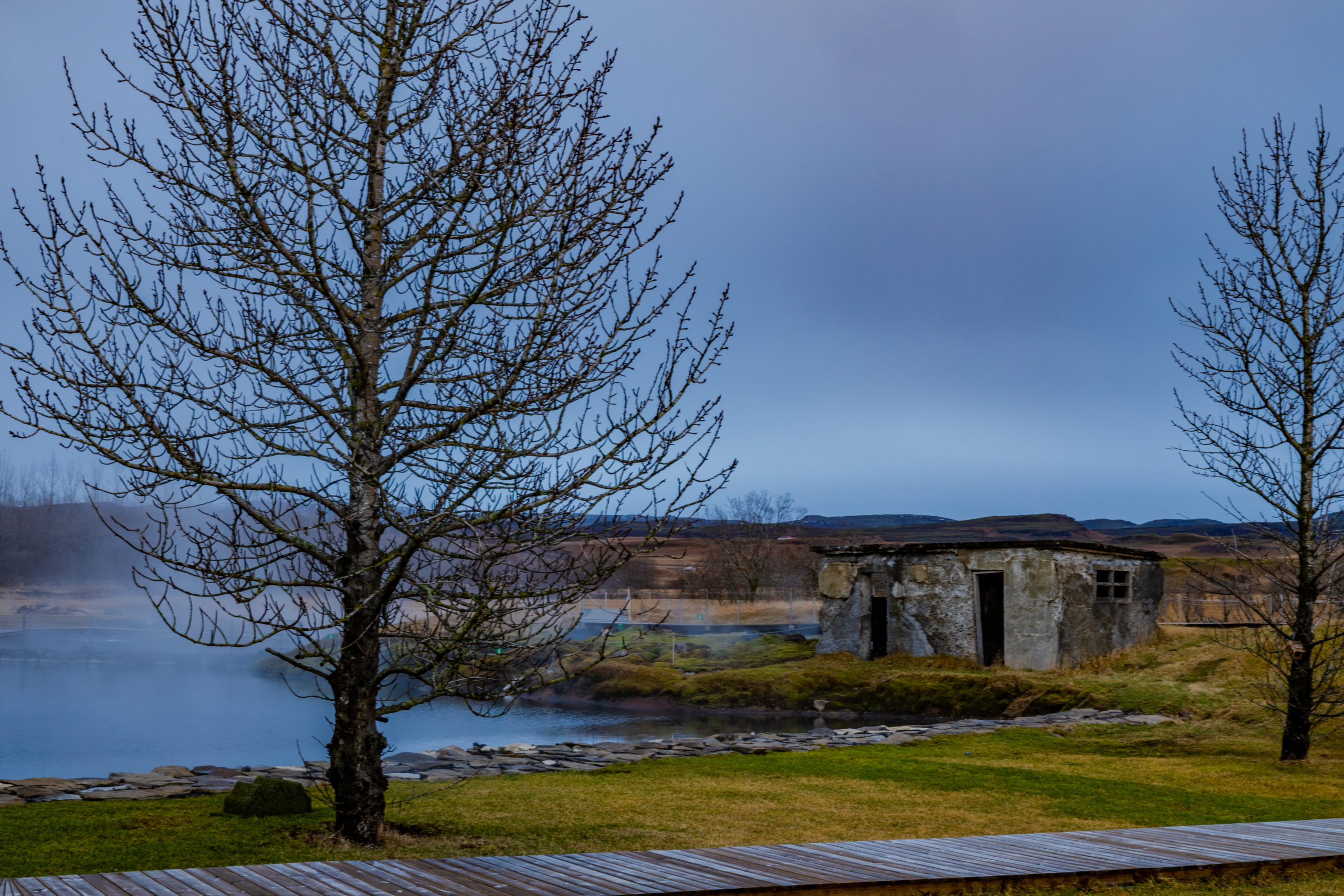
10. Gamla Laugin: The Secret Lagoon near Flúðir
The truth about the best place to see northern lights in Iceland, is that it will change with the weather, and with your expectations. Maybe you have a certain photo you want to get, or a certain thing that you want to see. Maybe you want to stay in a specific region, or are looking for cozy places to unwind while you you look.
Places like the Secret Lagoon near Flúðir, perhaps. We are pretty big fans of watching the lights from warm places, and this is one of the warmest. If your plans and the weather both allow it- watching the aurora from a natural hot spring is an incredible experience.
Particularly one as beloved as the Secret Lagoon. One of Iceland’s oldest “swimming pools”, this is the place where many southern Icelanders first learned to swim.
And within 24 hours, it has replaced its own water as it continuously flows. One of the most authentic bathing experiences there is, coupled with one of the most authentic aurora watching spots we know.
Tip: Check the website before you go to see what the conditions are for that day. Depending on traffic, you may need to book in advance. (The lagoon is big, but it is always better to plan ahead if you can.) The hours of the lagoon may change, so double-check the schedule to see how late they’ll be open when you visit.
10 facts about the Northern Lights to dazzle your mind and ignite your imagination
You’ve heard about why the lights happen, what changes the colors, and when is the best time to see them.. But what else is there to know?
The aurora is one of nature’s most mysterious phenomena. We spend a lot of time talking about it, reading about it, and looking for it– so we put together these 10 facts about the Northern Lights that might be interesting to another aurora enthusiast.
How many of them did you already know? Let us know in the comments!
1. Galileo gave the aurora the name we use today
Sometime around 1619-1621 A.D., Galileo Galilei, and Pierre Gassendi witnessed an aurora. A time of great astronomical advancement, this event kickstarted the aurora madness that we all know so well today.
This is where the name “Aurora Borealis” was born. Coming from the name for the Roman goddess of the dawn (Aurora), and the Greek god of the northern wind (Boreal), the term we are so familiar with today was penned.
Though Galileo and Gassendi are credited with some of the earliest modern writing, there are multiple historic records of early cultures recording their glimpses of the lights.
And despite having named it, Galileo didn’t actually know what it was. In fact, he named it “aurora” because he thought it was the sunlight reflecting off of the atmosphere.
We didn’t know the true source of the aurora until the early 1900s when…
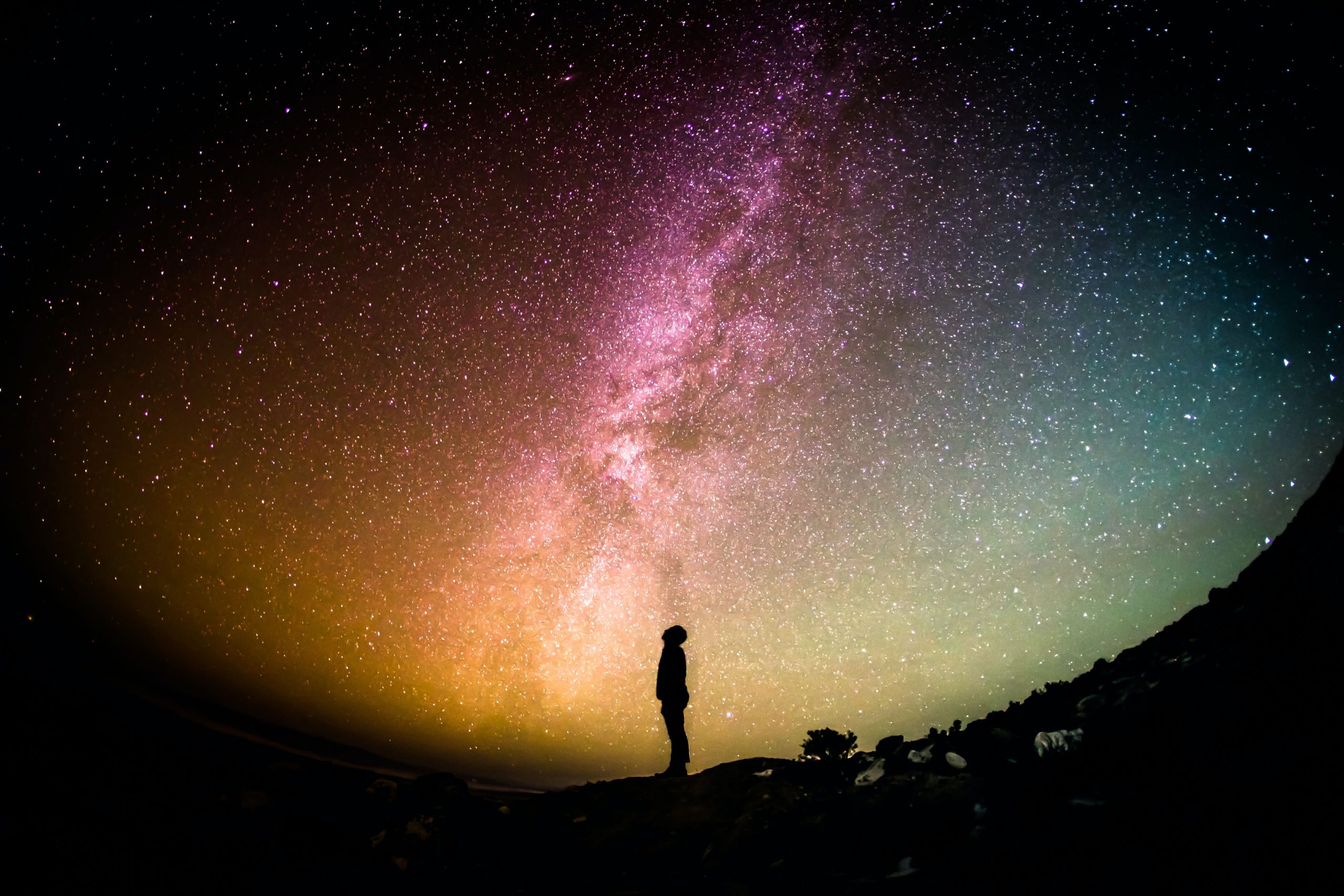
2. Kristian Birkeland developed the theory of atmospheric electric currents, therefore revealing the origin of the Northern Lights.
Often referred to as “The Father of the Aurora Borealis”, Norwegian scientist Kristian Birkeland is responsible for introducing us to the real source of the Northern Lights.
Between 1899 and 1900, he organized the Norwegian Polar Expedition to study the global patterns of electric currents. He did this by making magnetic field measurements from Earth, and the theory he was able to develop through this study is the basis of the theory we use today.
He released this information to the world in 1908 in his book, “The Norwegian Aurora Polaris Expedition 1902–1903”. Birkeland went on to be nominated for 7 Nobel Prizes, but in his lifetime his work was highly contested and considered a fringe theory at best.
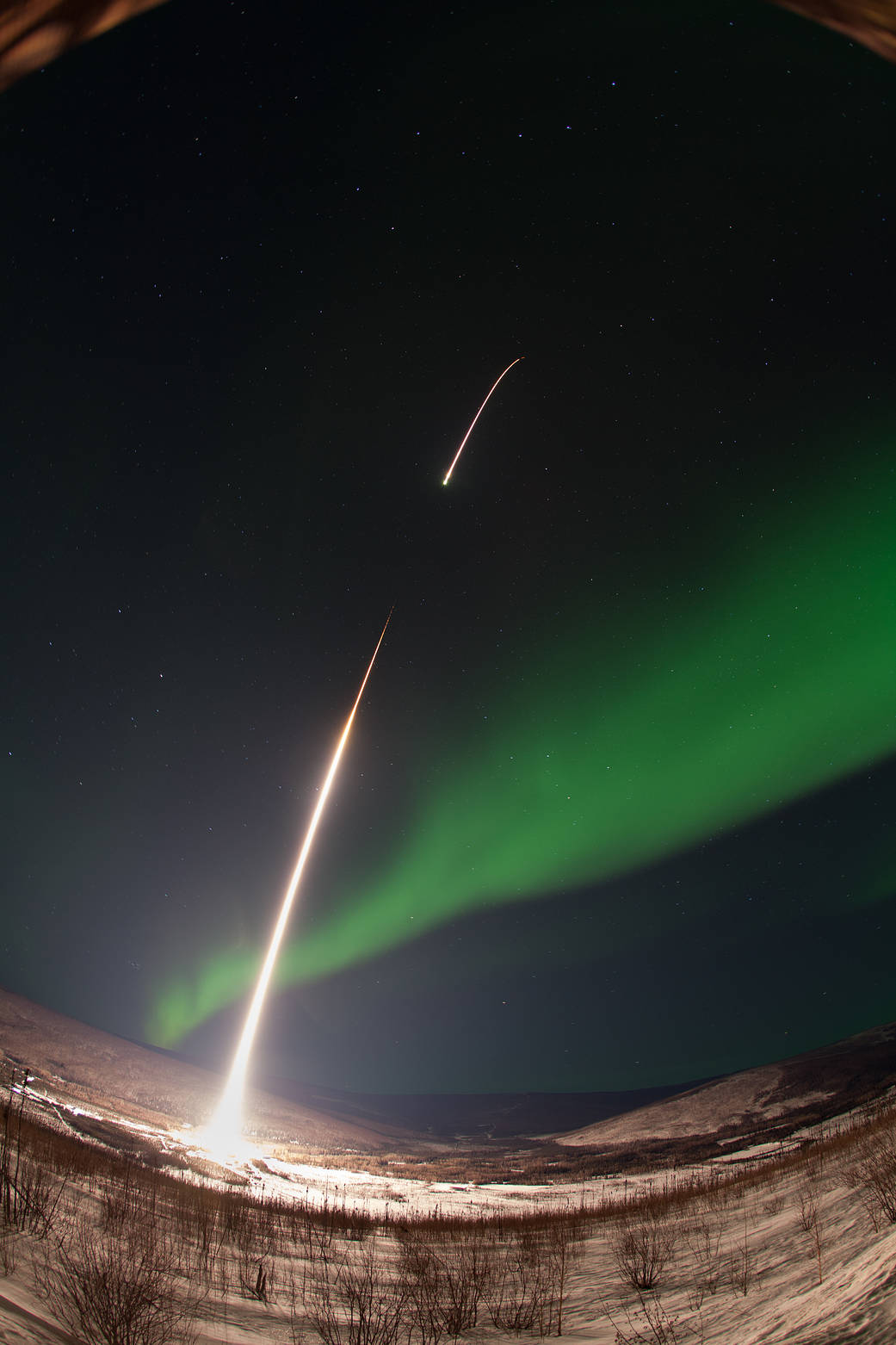
3. We didn’t believe Birkeland’s theory until 1967!
(Ok well maybe some people did.) Kristian Birkeland died in 1917 at the age of 49, and at the time of his death, many mainstream scientists did not believe his theory about the aurora. The difficulty here was that his experiments were costly, and it was believed that this theory could not be proven by ground measurements alone.
(It also didn’t help that it was the early 1900’s, and getting to space wasn’t an option yet.) Things changed in 1967 however, when the U.S. Navy sent satellite 1963-38C up into space. This probe carried a magnetometer above the ionosphere, proving the existence of magnetic disturbances, and therefore, Birkeland currents.
Like many scientific discoveries, the origin of the aurora was only made possible by the study of many, many curious people. Birkeland’s study was the next step here, but for him these hypotheses were made possible by the work of scientists like Anders Celsius and Olof Hjorter before him.
It makes you wonder what discoveries will be born of our curiosities now!
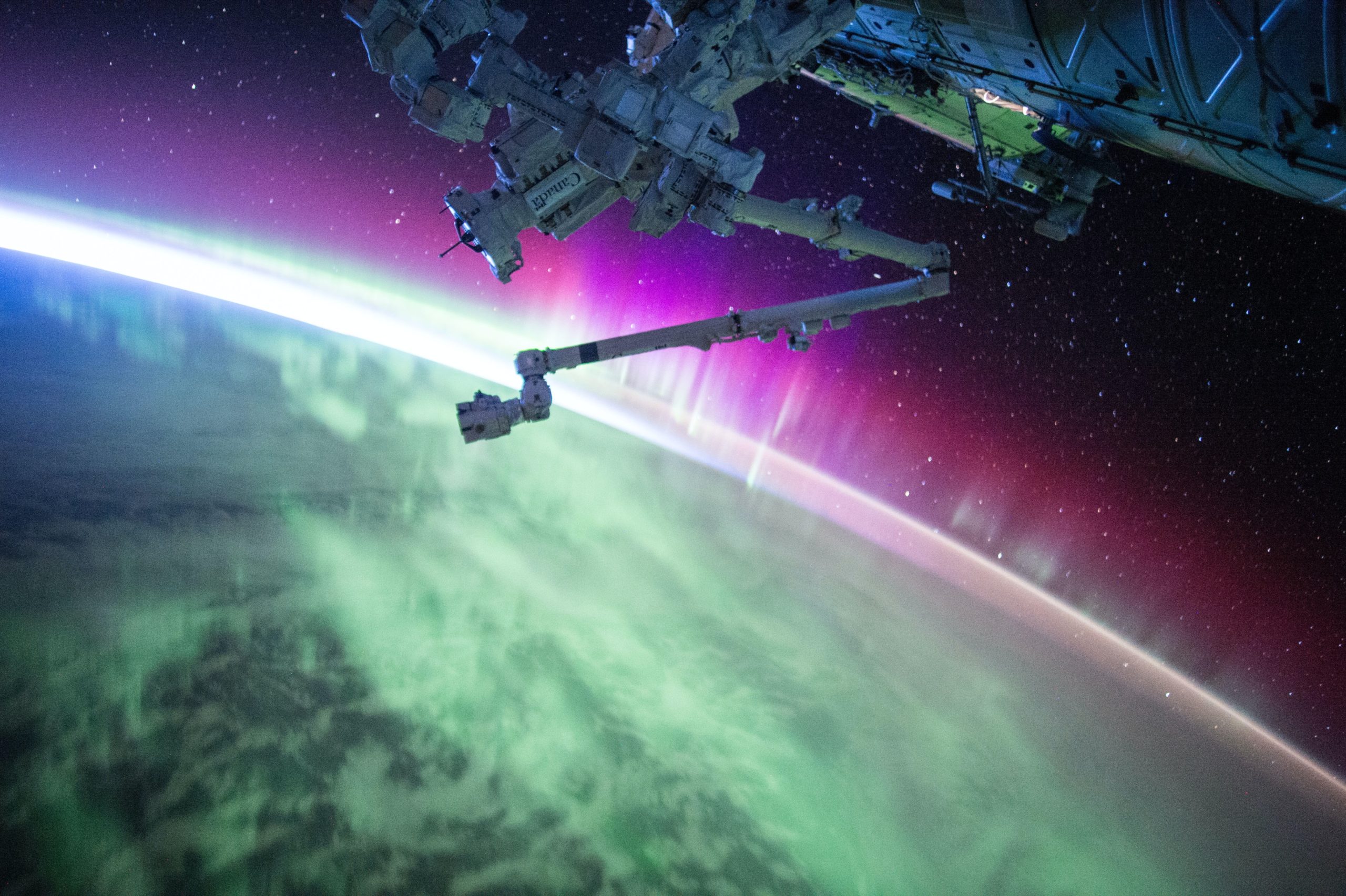
4. We continue to study the aurora.
Our quest for auroral knowledge did not end with that Navy probe, or with Kristian Birkeland. In fact, it proliferated. Citizen scientists have been hard at work monitoring space weather and collecting data on what they can see- and even NASA is hard at work filling in the blanks!
This is still very much a developing branch of science, and even as recently as June 2021 new data has been collected via NASA’s Magnetospheric Multiscale mission.
Satellites, sounding rockets, multiple study missions, and laboratory experiments here on Earth are just some of the ways that we are inching closer to a better picture of what creates our favorite light show, and how it can be affected by different factors that we have yet to fully understand.
Perhaps this study will far surpass our lifetimes, just like Birkeland. Imagine the strangeness of today’s facts becoming tomorrow’s misconceptions. The journey continues!
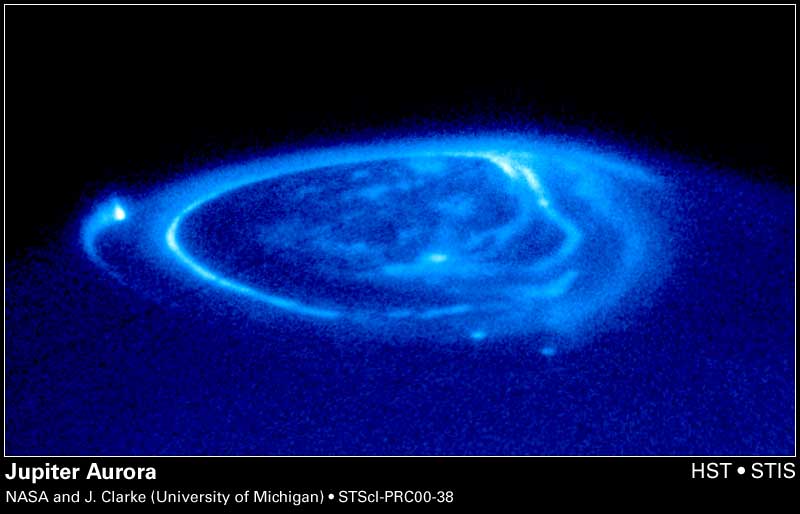
5. We’re not the only ones with auroras!
As you may know, there are two different areas on Earth where one can view auroras. There’s the Aurora Borealis in the north, and the Aurora Australis in the south. But now that we can see a bit further out of our own planetary neighborhood, we know that other planets host auroral light as well!
Because we know that the look of an aurora is caused by the atmospheric gases that it collides with, we can make a lot of inferences based on what we believe the atmospheric makeup of a certain planet to be. We now know that planets like Saturn, Uranus, and Neptune have auroras due to the interaction of solar wind with planetary magnetic fields.
We also know that nearby Mars and Venus have them as well, due to solar wind engaging with their atmospheres. Tools like the NASA/ESA Hubble Space Telescope and NASA’s Juno spacecraft have been able to not only confirm this, but also capture images of planets like Jupiter in full glow.
Just by seeing these things, we are able to learn more about how our sun functions, and how other planets are not just different from ours, but alike.
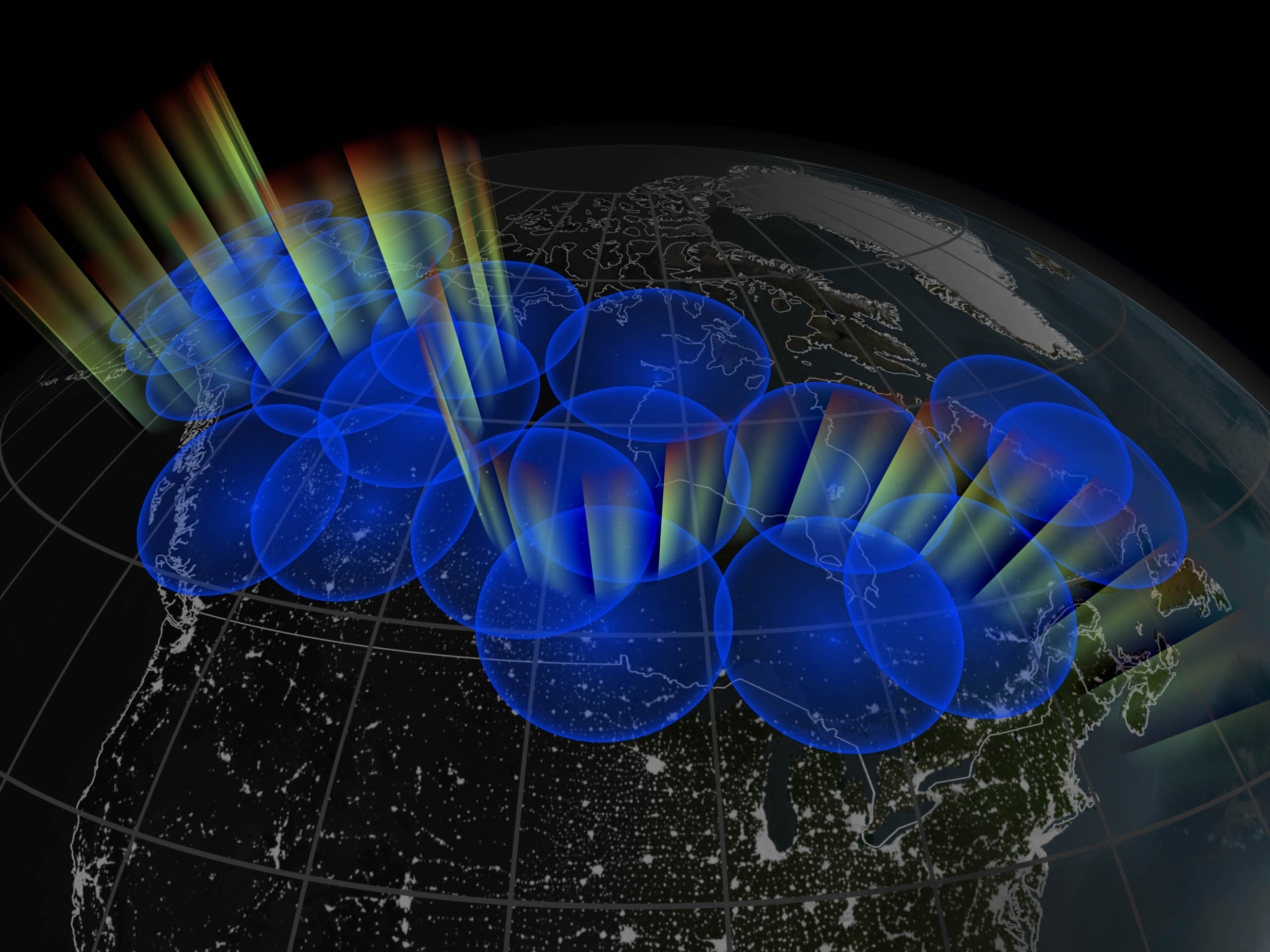
6. It isn’t just NASA making discoveries. Citizen science is at an all-time high!
Being on Earth in the 21st century is an exciting thing. There is more information available to us than ever before, and more accessible tools than we’ve ever been able to acquire. (It also helps that we are less likely to be burnt at the stake for pursuing a scientific theory. Maybe.)
And in that spirit of advancement, in 2016 in western Canada, citizen scientists made an incredible discovery. We know that discovery today as STEVE, or, Strong Thermal Emission Velocity Enhancement.
STEVE was originally named after a reference from the animated film “Over the Hedge”, in which the character’s named a hedge without knowing what it was. Early viewers of STEVE also weren’t sure what it was, so the name stuck.
STEVE is a pinkish “streak” that can appear in conjunction with auroral activity (often appearing as a spiky picket fence), and though we’ve actually been seeing it for centuries, it was never truly researched until this sighting.
STEVE is created by particle friction, which explains its incandescent color. It occurs closer to the equator than the lights typically do, and because of the collaboration of astronomical photographers and scientists, we were able to learn more a lot more about what actually causes it.
It just goes to show that there is always more to discover, and any one of us can lend a hand.
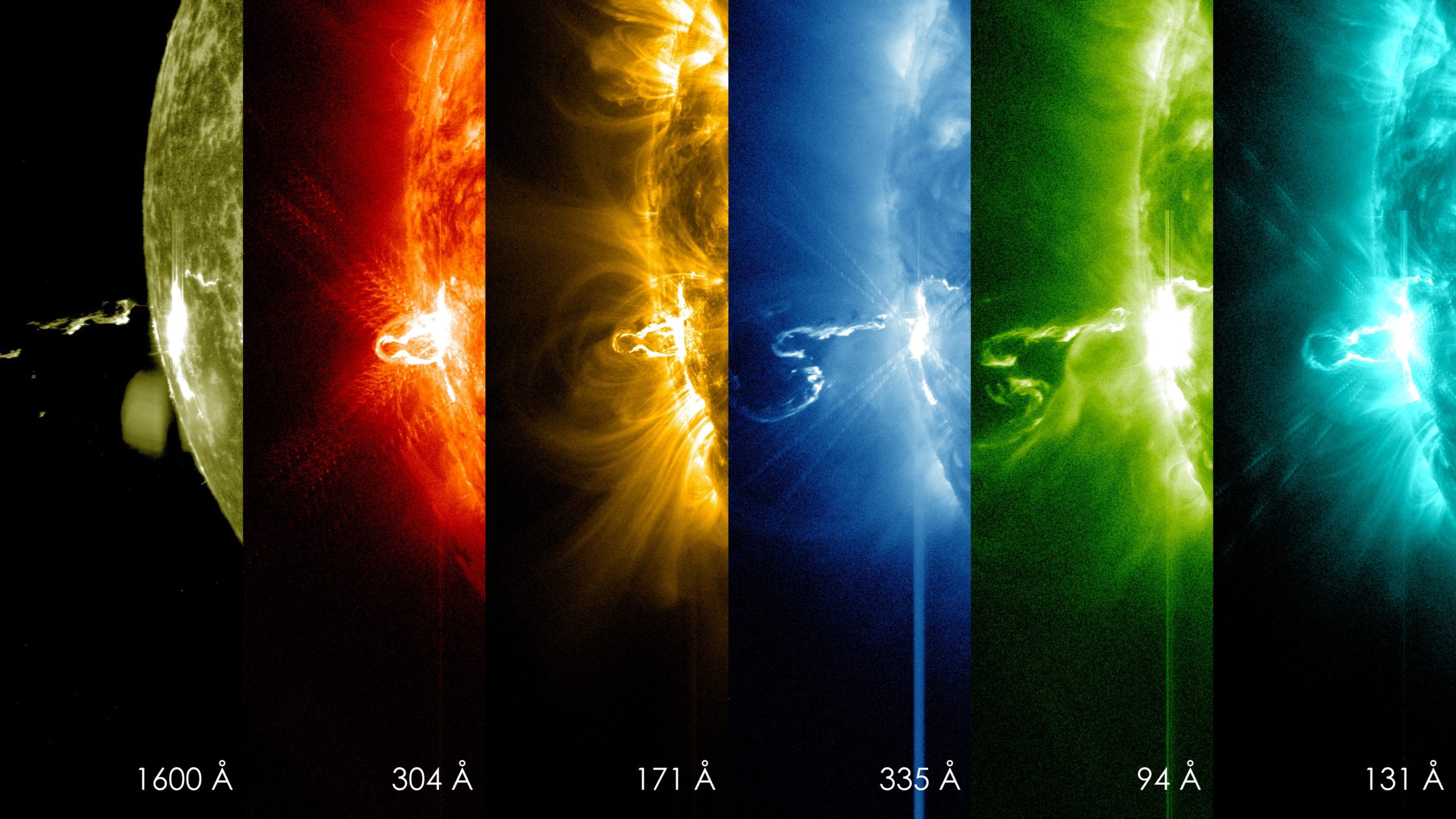
7. Auroras may not be dangerous, but space weather can be.
Though uncommon, space weather can disrupt us on Earth. The most dramatic record of this is the geomagnetic storm of August-September 1859, otherwise known as a Carrington Event.
Named for the British astronomer Richard Carrington, whose work helped to prove the existence of solar flares and their effect on Earth and the lights. When this geomagnetic storm happened, it damaged telegraph lines and injured the people working with them.
Technicians were shocked, telegraph papers were set ablaze, and lines were electrified. The Northern Lights were visible as far south as far as Hawaii and Cuba. On March 13th, 1989 a similar geomatic storm occurred, affecting the electrical grid again by creating a power blackout in Canada.
This event affected power grids in Canada, all the way down to New Jersey in the United States. Our electrical systems had updated a bit by then, so there were no telegraph papers to set on fire- just transformers to damage.
As you can see, these types of things are few and far between, but there are sources of information about how to prepare for similar events.
(Though, Carrington Events are not a common occurrence, and you are likely better served by preparing for the natural disasters that we see more frequently in our respective corners of the globe.)
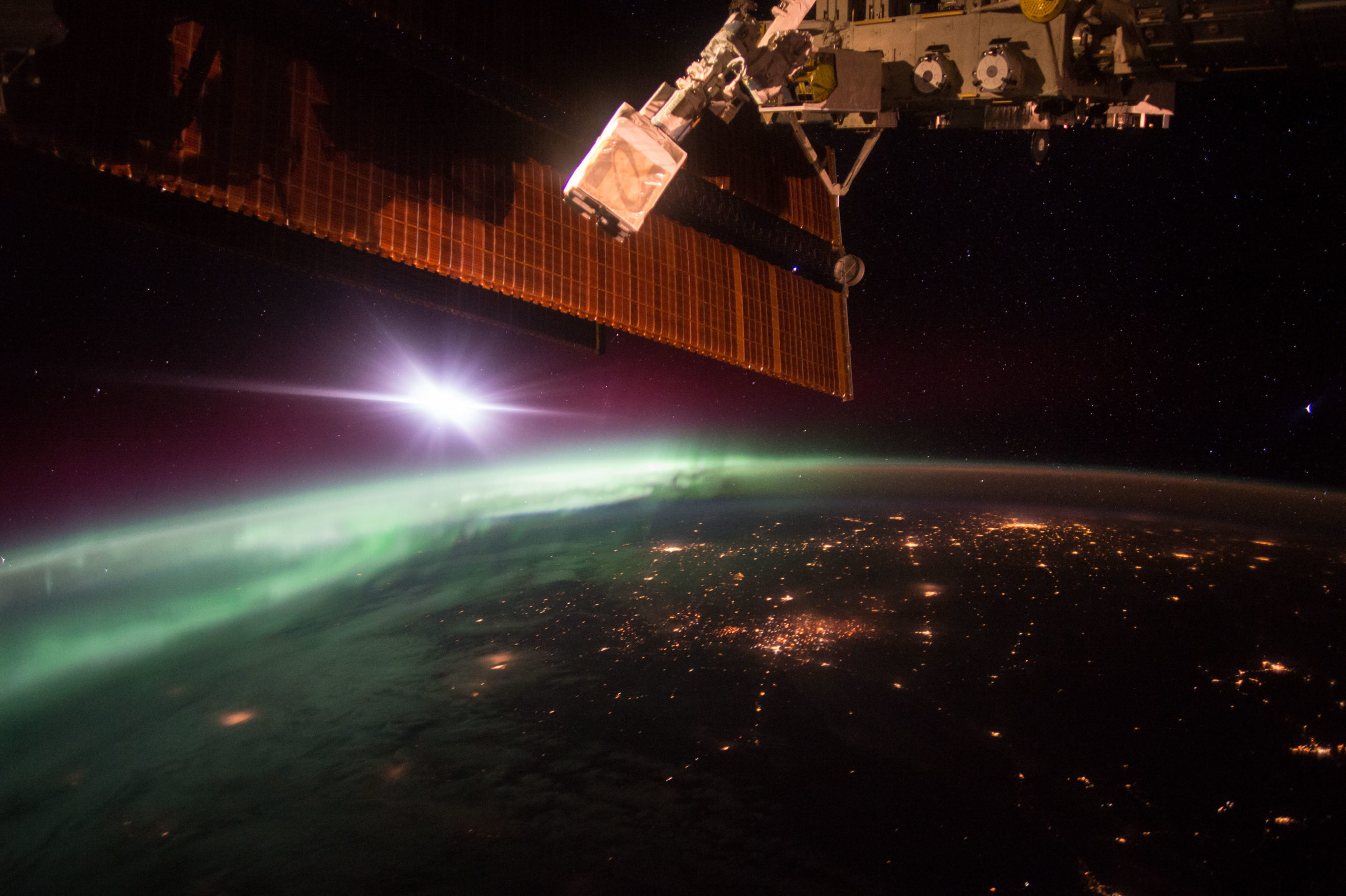
8. We’re not the only ones watching.
So we know we’re watching it, photographers are watching it, citizen scientists and space weather enthusiasts are watching it- but who else? It turns out there are a lot of student researchers and working astronomers keeping tabs as well!
Researchers on the THEMIS mission under NASA’s Explorer Program used satellites in 2008 to find out what causes movement in aurorae. In 2016, The ESA’s Sentinel-3A satellite danced right through the aurora after a launch.
There are countless aurora and space weather observatories throughout the world, and even the astronauts in the International Space Station are up there looking down on the dancing lights.
Sometimes, there’s even a chance to watch together in programs like #AuroraHunters, hosted by the ESA and the Norwegian Space Centre.
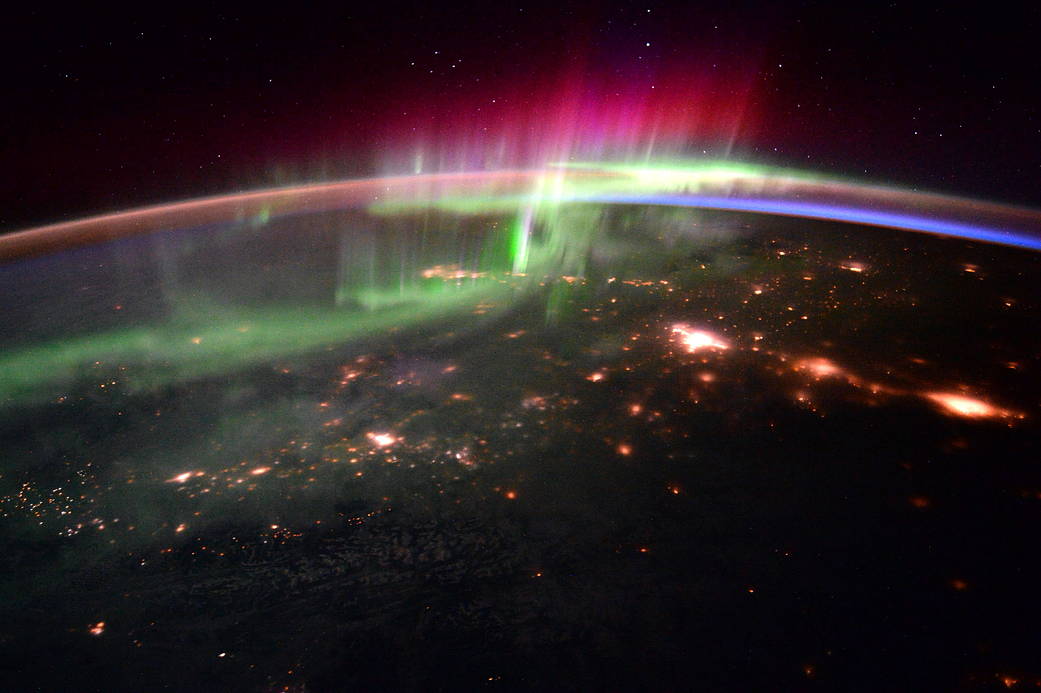
9. They’re pretty high up there!
The Northern Lights are a unique combination of space weather, and Earth’s magnetic field- so where exactly do they happen?
An average auroral occurrence can occur as low as 80-100 km. above Earth.
This doesn’t sound like much, but if you think about it, airplanes only fly about 10 km. above us, and Mount Everest only reaches just under 9 km.! Depending on varying factors, the aurora can reach as high as 500-1000 km. above Earth, which means that it has some interesting neighbors in the middle.
One of which is the International Space Station, sitting at an orbital height of 408 km, and height neighbor Tiangong Space Station, who varies between 340 and 450 km.
Because of this, cosmonauts in either station could one day look out the window and see the lights around them, instead of below or above. Keep an eye out on their socials to see the amazing captures that they make!
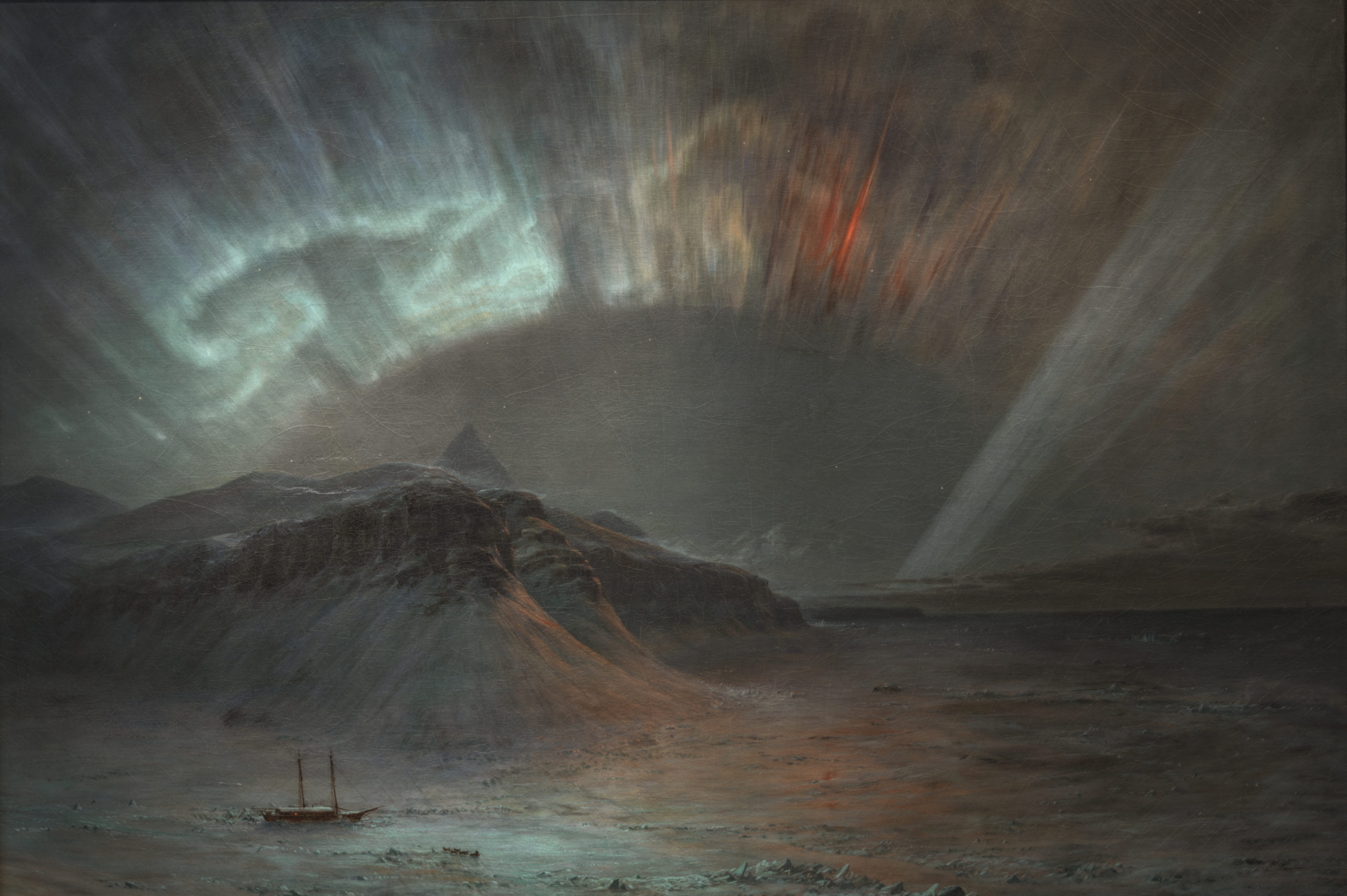
10. Before we could photograph the lights, there was art.
Our ability to photograph and film the lights has been such a recent advancement in the long timeline of human creativity. One could say that the accessibility of this art continues to grow even now, as SLR cameras become easier to get, and smartphones get.. Well, smarter.
We have drones, phones, tiny waterproof cameras, and all kinds of things. This method of capture creates amazing work, especially due to the camera’s ability to process low light better than our limited human eyes. But before this technology, there was still art and the drive to capture this beautiful thing.
Thousand upon thousands of works depicting the lights have been made, but one of the earliest comes to us from Cro-Magnon cave paintings around 30,000 B.C.
There are works referenced from early China and the belief that the sighting of Northern Lights may have become entwined with belief in great supernatural dragons.
There were many painters in the more mobile days of the late 1800s like Danish painter Harald Viggo Moltke, and American painter Frederic Edwin Church, two individuals inspired by their experiences on Arctic expeditions.
Today we continue the tradition with thousands of technological installations, museum exhibits, handicrafts, and more. As we learn more about this incredible gift of nature, it seems, so does our curiosity and our devotion to its existence.
Perhaps the one thing over time that has never changed. Fact.
Best Place to See Northern Lights
Best Places to View Northern Lights
Below you will find information on some great places in Iceland for viewing the northern lights. These are not only great places to see the lights but also feature many activities and natural sights. When planning a trip to Iceland it’s important to research what kind of things you would like to do and the places to see. The northern lights can only be seen in the winter, when it’s completely dark with clear skies. There are many nights where visibility is low so make sure you have other items on your bucket list and take in as much of the country as you can. The northern lights are a natural phenomenon, so a bonus to your trip.
Hotel Rangá – the best place to see Northern Lights
Hotel Rangá is one of the most renowned hotels in Iceland for seeing the northern lights. It was the first hotel in the country to offer a northern lights wakeup call service to its guests so they could pull their parkas over their pyjamas if the Aurora made an appearance. In addition to their comfortable and luxurious rooms, the location on the south coast is in close proximity to natural wonders like Seljalandsfoss and Skógafoss waterfalls, the Reynisfjara black sand beach and basalt columns, and the infamous Eyjafjallajökull volcano. Hotel Rangá makes for a great place to see the beautiful dancing northern lights.
Hotel Glymur with its amazing village suites
Hotel Glymur is a friendly hotel with a beautiful village suites. It’s located in majestic Hvalfjörður (“Whale Fjord”) just north-west of Reykjavík, and has breathtaking scenery. It has a lovely relaxed atmosphere and a great restaurant that offers everything a hungry stomach needs. The six village suites are uniquely designed villas, each with an open-concept kitchen, bedroom, bathroom, leather sofas, large screen TV, dining table, amazing art pieces and can cater for 4-6 people. With its remote natural location, it’s a fantastic place to see the northern lights without going too far from the city.
Hotel Gullfoss – next to the famous waterfall
Hotel Gullfoss is located right in the heart of the Golden Circle, next to the amazing and famous Gullfoss (“Golden Falls”) waterfall. One of the most beautiful waterfalls in Iceland—and even the whole world!—it is stunning to see all year round. When the sun is shining on it, there is often a golden rainbow over it that gives the falls their name. During the winter a stay at the hotel is truly magical, with no urban lights around one can walk out into the darkness, or lounge in a hot tub, and gaze at the starry sky and watch the northern lights dance totally undisturbed. You can even get great photos of the lights dancing over the waterfall, capturing two of Iceland’s most famous sights together.
Great hot tubs for Northern Lights viewing
With less than 100 inhabitants, Drangsnes is the ultimate spot for seclusion and solitude for viewing the lights. You can lay in the seaside hot tubs waiting for the auroras to show up over the tiny fishing village, indulge your inner nature-lover by exploring the surrounding area, and go mingle with the locals at the Malarhorn café. When the northern lights do come out here, there isn’t anything or anyone to disturb your enjoyment.
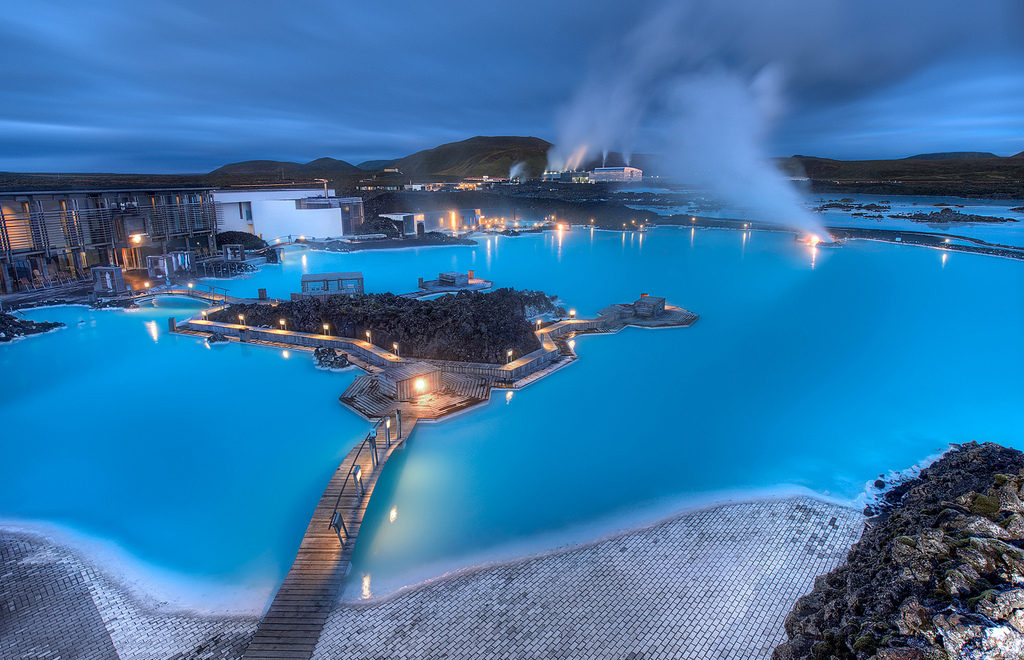
Discover the magic of Christmas in Iceland
Discover the magic of Christmas in IcelandSee with your own eyes why CNN travel voted Reykjavik as the Top Christmas Holiday Destination. A package provided by Iceland Travel |
|
|
Discover the magic of Christmas in Iceland and learn about new and old Icelandic Christmas traditions with Iceland Travel. It is a season when short days are brightened by snow and every house is decorated by all types of Chistmas ornaments and lights. It is a traditions people decorate their homes and have some very nice garlands in windows. Your hotel Icelandair Hotel Natura will be beautifully decorated too. The hotel will be visited by the 13 Santa brothers, the Icelandic Yuletide Lads.
|
|
The 5 days itineraryDay 1 Arrival.Overnight in Reykjavík
Day 2. Christmas in Iceland: "The Mass of St Þorlákur", Dec. 23rdIn Iceland Thorláksmessa is part of Christmas. Most people use the day to finish decorating the home and the Christmas tree. In the evening people go out to Laugavegur and finish buying Christmas presents. Another tradition is to eat the putrefied skate with potatoes, but for many foreigners it is a challenge!
Day 3. Christmas Eve Day, Dec 24thYou will do a escorted morning hike with myth and mysteries expert through the woods of Öskjuhlið. You will learn about the secrets of the Icelandic folklore with all its elves, monsters and trolls stories. When you walk through the little forest small surprises will await you here and there! You will receive a little Christmas gift as a remembrance of this little journey. In the evening you will be having a festive Icelandic style Christmas buffet a la Satt Restaurant
Day 4. Christmas Day, Dec 25th.Today we suggest you see some of Iceland main attraction, such as going for the Golden Circle or bathing in the Blue Lagoon. In the evening you will enjoy a Christmas buffet a la Satt Restaurant.
Day 5. Departure.Today you will be departing from Keflavik Airport after some great Christmas in Iceland.
|
What Causes The Northern Lights
Great Institute of Physics video on what causes the Northern Lights
Quick summary on what causes the northern lights
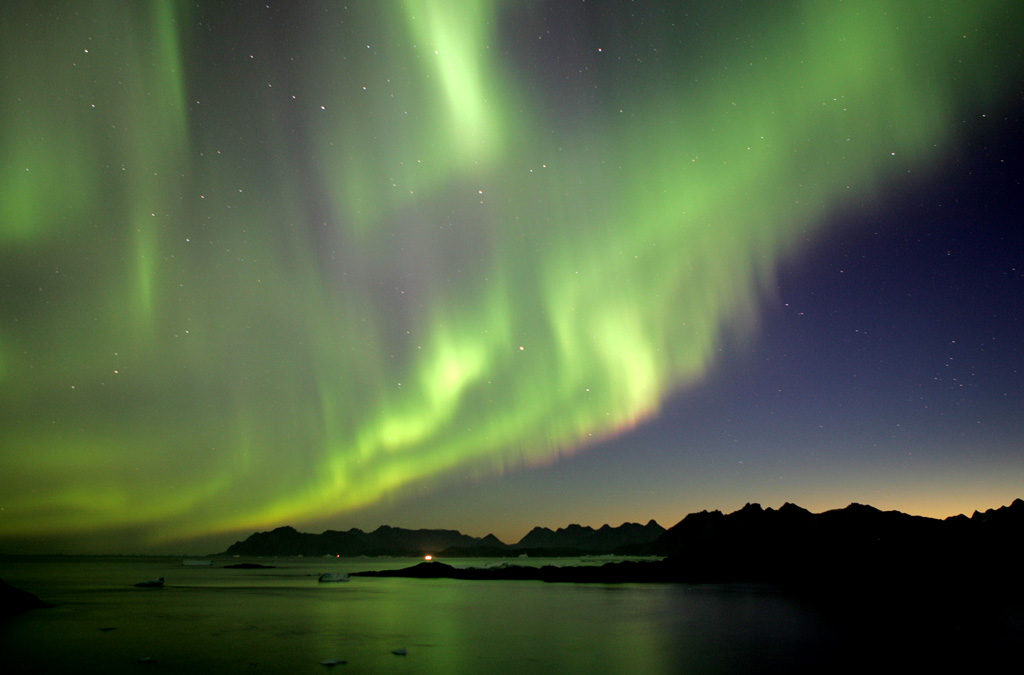
What causes the northern lightsThe Northern lights happen after collisions between charged particles released from the sun and gaseous particles in the Earth´s atmosphere. The color variations are due to what type of particles are colliding. Most often it is yellowish green produced by oxygen molecules located around 55 miles above earth. However we can sometimes see redish lights that are produced by high-altitude oxygen, at the heights of up to 150 miles. We also have nitrogen that produces blue or purple-red northern lights.
Since 1880 scientists have been suspecting the connection between the northern lights and the solar activity. In 1950 a research was conducted showing how the electrons and protons from solar activities are blown towards the earth in something called “solar wind”. The surface of the sun is millions of degrees on Celsius. At this temperature, gas molecules collide frequently and explode. By the rotation of the sun these free electrons and protons are thrown from the sun towards the earth by the solar wind. Then they are largely deflected when they hit the earth´s magnetic field.
The earth´s magnetic field is weaker at either the southern or northern pole and hence the particles enter the earth´s atmosphere and collide with the particles at the north or south poles. These collisions emit the dancing lights we know as Aurora Borealis or Northern Lights. Most often the dancing happens at the height of 50-60 miles, but can go as high as 400-450 miles above the earth´s surface.
The best time to see the northern lights are normally in the winter time. The long periods of darkness and often the clear nights provide us with many opportunities to watching the northern lights dancing in the sky. Research has also shown that auroral activity is cyclic, and peaking every 11 years. Next peak is going to be around 2013. Hope this has helped you understand better what causes the northern lights and it will be a good start for your Iceland holidays.
Northern Lights from Christian Mülhauser on Vimeo.
6 days self drive idea to Myvatn Nature Baths
6 days self drive idea to MyvatnA 6 days self-drive idea including Hofsos, Myvatn and northern lights hunt close to the Arctic Circle |
|
THE 6 DAYS ITINERARYDay 1 - Arrival in Keflavik, Iceland Arrival at Keflavik airport. Pick up your rental car at Thrifty. The first stop is Blue Lagoon. It is refreshing to jump into the Blue Lagoon just after your flight. It takes some 15 min to drive to Blue Lagoon from Keflavik Airport. From Blue Lagoon it should take some 30 min to get to Reykjavik. We recommend Center hotel Thingholt - a great hotel to stay at in Reykjavik. Very central and close to everything - shopping streets, nightlife or restaurants. In the evening we recommend you to do a guided northern lights tour with e.g. Arctic Adventures.
Day 2 - Hvalfjörður, Ferstikla, Borgarnes, Snæfellsnes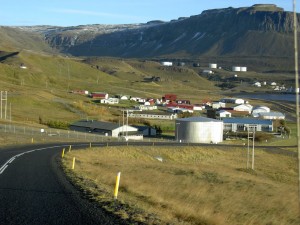 You start your travel in Reykjavik, drive through the small town Mosfellsbær - just continue until you reach the fjord Hvalfjörður. When you reach Hvalfjörður turn righ onto road no. 47 because we are going to drive through the beautiful Hvalfjörður - not through the tunnel as most people do. It is a very picturesque fjord and the main beauty if how quite area it is. It is around 30 km long. You can see a former whale station in the fjord but it was closed around 1992 - it is however used couple of days each year for some research fishing of whales. Driving further you will soon find the service station Ferstikla and it has a great photo exhibition about a submarine station situation in Hvalfjördur during the World War II. After you have looked at the photo exhibition at Ferstikla you turn right onto road nr 520. You will now drive all the way to Hotel Budir located on the Snæfellsnes peninsula. A great location to see exceptional nature in Iceland - both great beaches, mountains and a glacier. We suggest you to stay at Hotel Budir overnight and go out in the evening for a hike and search for the northern lights. You start your travel in Reykjavik, drive through the small town Mosfellsbær - just continue until you reach the fjord Hvalfjörður. When you reach Hvalfjörður turn righ onto road no. 47 because we are going to drive through the beautiful Hvalfjörður - not through the tunnel as most people do. It is a very picturesque fjord and the main beauty if how quite area it is. It is around 30 km long. You can see a former whale station in the fjord but it was closed around 1992 - it is however used couple of days each year for some research fishing of whales. Driving further you will soon find the service station Ferstikla and it has a great photo exhibition about a submarine station situation in Hvalfjördur during the World War II. After you have looked at the photo exhibition at Ferstikla you turn right onto road nr 520. You will now drive all the way to Hotel Budir located on the Snæfellsnes peninsula. A great location to see exceptional nature in Iceland - both great beaches, mountains and a glacier. We suggest you to stay at Hotel Budir overnight and go out in the evening for a hike and search for the northern lights.
Day 3 - Drive to Myvatn and enjoy its nature baths and surrounding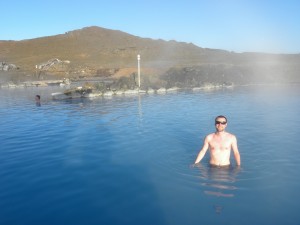 Today you will first drive to Hofsos swimming pool - a great location with view over Skagafjördur. A place not to miss. Then you will head all the way to Myvatn. We recommend you to stay at Sel-Hotel Myvatn. A nice hotel with good service. The rest of they day you will enjoy the great nature bath they have, have some dinner at the hotel and then go out in the night searching for the northern lights. It is best to wait until 10pm and then simply go out for a walk - however ask the people in the reception about the likelihood of seeing the northern lights before you head out for a search. Today you will first drive to Hofsos swimming pool - a great location with view over Skagafjördur. A place not to miss. Then you will head all the way to Myvatn. We recommend you to stay at Sel-Hotel Myvatn. A nice hotel with good service. The rest of they day you will enjoy the great nature bath they have, have some dinner at the hotel and then go out in the night searching for the northern lights. It is best to wait until 10pm and then simply go out for a walk - however ask the people in the reception about the likelihood of seeing the northern lights before you head out for a search.
Day 4 - Akureyri - capital of the north and DalvikToday you will drive in the morning to Akureyri from Myvatn. We recommend Icelandair Hotel Akureyri. When you have checked in we suggest you drive out to Dalvik a small fishing village north of Akureyri. A small village in a beautiful fjord. It is a option but you could go for a whale watching with a local tour. Drive back to Akureyri and enjoy staying in Akureyri with some great restaurants. In the evening go for the northern light hunt, but drive out of the city so you dont have any light pollution.
Day 5 - Driving back to Reykjavik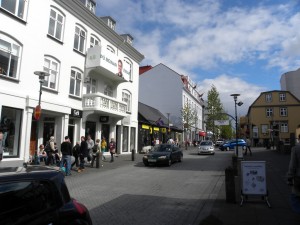 It will take you some 6-8 hours to drive back to Reykjavik from Akureyri, so we recommend you to go early in the morning so you will have some time to spend in Reykjavik in the evening. We would recommend Sjavargrillid as nice fish restaurant in the evening. In case you have been very unlucky and never seen the northern lights in the last 4 days we recommend a guided northern lights tour with e.g. Arctic Adventures. It will take you some 6-8 hours to drive back to Reykjavik from Akureyri, so we recommend you to go early in the morning so you will have some time to spend in Reykjavik in the evening. We would recommend Sjavargrillid as nice fish restaurant in the evening. In case you have been very unlucky and never seen the northern lights in the last 4 days we recommend a guided northern lights tour with e.g. Arctic Adventures.
Day 6 - DepartureHead out to the Keflavik airport and if you have some extra time go for the Blue Lagoon again as it is very relaxing before going into a long flight.
Photo credit: Flickr - big-ashb, Ophelia, Julien Carnot, JasonParis, Andrea Schaffer, Olafur Larsen |
4 days self drive idea : Golden Circle & more
[vslider name="31"]
Golden Circle & Snæfellsjökull glacier
4 days self-drive idea including Golden Circle, Snæfellsjökul glacier and northern lights hunt in the evening
|
This idea is for people wanting to combine a classic tour to Geysir and Gullfoss with a one day trip to Snaefellsjokull glacier - and a northern lights hunt in the evenings. You will need to rent a car in day two for driving the Golden Circle and then the day after to Snæfellsjökull glacier. |
THE 4 DAYS ITINERARY
Day 1 - Arrival in Keflavik, Iceland
Day 2 - Golden Circle trip
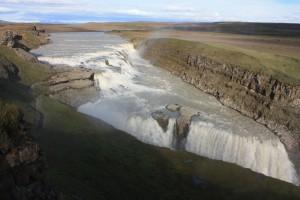 Begin your day with picking up your car rental. You can do that at BSI. Today is a day for the Golden Circle tour. Visiting Thingvellir National Park and then head to Lyngdalsheidi on our way to Geyser hot spring area. See all the hot spring, photograph Strokkur and check out Fullsterkur - some interesting stones to lift close to Strokkur. Go to the Geysir shop and shop some Icelandic knit "lopapeysur". Drive to Haukadalur - a small forrest close by and check out the small country style church. Great area. Drive to Gullfoss waterfall now. Get close to the waterfall and experience the spray from the waterfall in your face. Shoot some photographs and head up to the restaurant next the waterfall. The Icelandic meatsoup is the best choice on the menu. Head back to Reykjavik now - but stop at Kerið on our way home. Kerið is a dormant volcano close to Selfoss. Arrive in Reykjavik close to 19:00 should be possible. Go for some nice restaurant in the evening e.g. Sjavargrillid before driving out of Reykjavik around 9pm to hunt for the northern lights. It depends on weather condition where to head and best to ask the hotel personnel for direction.
Begin your day with picking up your car rental. You can do that at BSI. Today is a day for the Golden Circle tour. Visiting Thingvellir National Park and then head to Lyngdalsheidi on our way to Geyser hot spring area. See all the hot spring, photograph Strokkur and check out Fullsterkur - some interesting stones to lift close to Strokkur. Go to the Geysir shop and shop some Icelandic knit "lopapeysur". Drive to Haukadalur - a small forrest close by and check out the small country style church. Great area. Drive to Gullfoss waterfall now. Get close to the waterfall and experience the spray from the waterfall in your face. Shoot some photographs and head up to the restaurant next the waterfall. The Icelandic meatsoup is the best choice on the menu. Head back to Reykjavik now - but stop at Kerið on our way home. Kerið is a dormant volcano close to Selfoss. Arrive in Reykjavik close to 19:00 should be possible. Go for some nice restaurant in the evening e.g. Sjavargrillid before driving out of Reykjavik around 9pm to hunt for the northern lights. It depends on weather condition where to head and best to ask the hotel personnel for direction.
Day 3 - Snæfellsjokull glacier and Hotel Budir
Driving to Snæfellsjokull today with some stop-over at Landsnamssetrið (The Settlement Centre). It is in the village of Borgarnes just one hour drive from Reykjavik on road no 1 towards the north (and Snæfellsnesjokull). In the centre we recommend The Egils Saga Exhibition. We head now towards Snæfellsjokull with some stop at Lysuholl swimmingpool. After hiking a bit around Snæfellsjokull glacier we head to Hotel Budir that is a nice country style hotel at Snæfellsnes. We stay here for one night. Great place for hiking and seeing the nature in Iceland. Especially hunting for the northern lights in the evening.
Day 4 - Departure day
Today is your departure day so just wake up, pack your things and drive to Keflavik airport. This is of course only possible if your flight leaves late in the day - and if time allows, go to the Blue Lagoon and relax before you fly back home.
Photo credit: Flickr - AlexKr, Arian Zwegers, Ophelia, Matito, Jeremy Vandel, Yellow book
What are the Northern Lights?
For many years, people in the polar regions have been mystified by the dancing of bright lights in the darker months. This wonder continues today. But what are the northern lights, and why do they happen?
What are the northern lights?
Long story short, the northern lights are the visual byproduct of intense space weather. They are a natural phenomenon related to a multi-step process, similar in a way to lightning, rainbows, or even colorful sunsets.
The things that cause them are primarily unseen, and occupy the space around us in our atmosphere. These are things like atmospheric gases, high powered electrons, and our geomagnetic field.
The true wonder of all of this is that sometimes all of these things align into a moment of interaction- and when we are lucky, we can see the magic of auroras.
It all starts here on Earth
Earth is a special planet. It is one of the few places that we know of that can support human life. One of the many reasons that this is possible, is because we are protected from harsh space weather by our geomagnetic field. Many other planets also have a magnetic field, but ours is one of the strongest.
The core of the Earth is filled with layers of partially molten iron under great gravitational pressure. This area of iron is huge, and because of the different temperatures, there is a fair amount of movement occurring here.
The hottest material rises, causing swirling convection currents inside the Earth. You can see a current like this in a pot of boiling water. The way that those bubbles spiral up to the surface, is a lot like what is happening inside the Earth. The movement of all of this metal makes electrical currents that rise up through the Earth’s surface, and create magnetic fields.
However, that isn’t the end of it! The Earth is also spinning, which causes additional movement in an effect called ‘the Coriolis Force’. This force combines all of those magnetic fields into one larger magnetic field, which protects all of us from radiation and solar wind, and forms the magnetosphere.
Because we can’t see the magnetic field, we normally represent it by drawing lines. These lines go into and out of the Earth, meeting at the poles, making the Earth look like an exceptionally round butterfly.
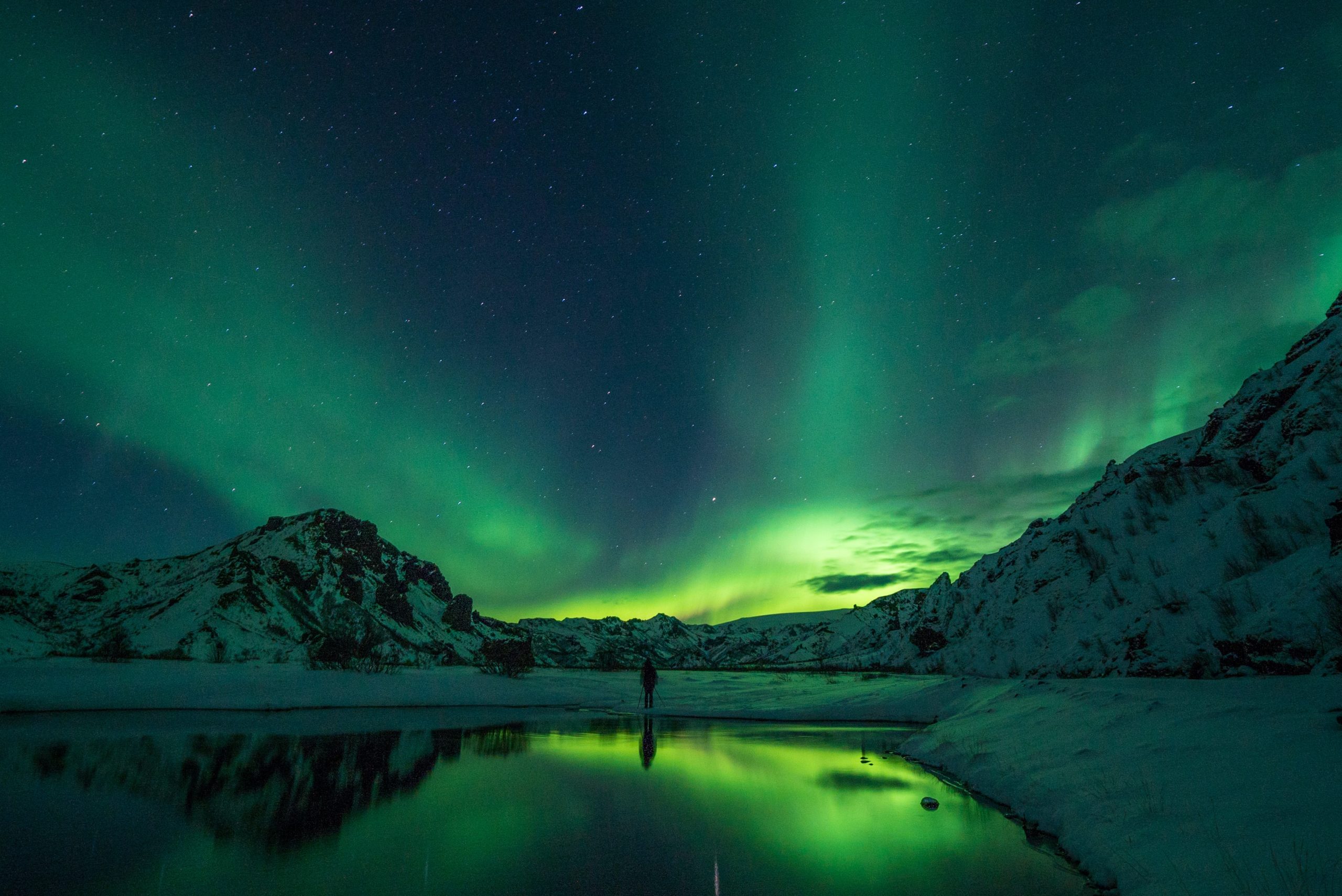
From the sun, with love
So we know about Earth and its magnetic field. But where does the actual aurora come from? While the Earth is creating convection currents, a similar thing is happening in the Sun, a star that is nearly 15 million degrees Celsius at its core.
As the pressure and movement within the sun push outwards, magnetic fields form here as well. The stronger ones are able to push through to the surface, slowing as they cool, and creating sunspots. We pay attention to these dark spots on the Sun, and often predict large auroral activity by their reappearance.
But back to the action! The electrically charged gas (or plasma) that exits the sun contains the magnetic fields that were just created. When this massive “ball” of plasma breaks away from the surface, it is ejected out into space as a “solar storm”. (Smaller versions of this kind of expulsion happen frequently, and are often referred to as solar wind.)
Depending on the strength of the solar storm and the obstacles that it meets along its way, its speed and travel time can vary. That is why auroral forecasts are not always perfectly timed, it can be challenging for us to measure these factors.
The lucky collision
If everything lines up and the sun sends a solar storm in our direction, it will first have to pass over Mercury and Venus, before it gets to us. But when it does finally arrive, a strange sort of collision occurs between us and the solar storm.
The magnetic field inside the solar storm clashes with our magnetic field, and combines. Once they are connected, the charged gases travel down the imaginary lines of the connected magnetic field, traveling to the poles that attract it.
As the storm passes over us, these imaginary lines go with it, eventually breaking and reconnecting on the other side. This breakage creates another opportunity for gas to travel down to the poles, as the storm moves away.

An aurora is made
The gases carried within the solar storm have arrived, and are traveling down to the places on our planet where the magnetic force is the strongest, the poles. But how does all of this make an aurora?
The gas that is now in our atmosphere contains supercharged protons and electrons, or ions. This energy becomes trapped in our ionosphere, around the north and south pole in a shape we call the auroral oval.
When this happens, they will eventually collide with pockets of oxygen and nitrogen in our atmosphere- which is the big moment that we are waiting for.
At the moment of this crash between ions and gases, energy is released that creates a glow, or an effect of visible light. You’ve seen many interactions like this here on Earth, like the interaction that creates neon light in signs.
This is an exciting moment, and a reminder of how small we are in the scale of the universe. But it is also only the beginning of the aurora’s visual journey to us, once it arrives. Because next, we have to learn about all of the Earth factors that have to line up and cooperate, for us to even begin to be able to witness this incredible natural phenomenon with our own eyes.
Northern Lights Forecast for Iceland
One Stop Northern Lights Forecast
The Northern Lights season runs from 1st September, through winter, until 15th April, typically.
To see the Northern Lights with your naked eye, you need:
- Darkness (winter only)
- Clear skies (no clouds)
- Aurora activity (Northern Lights)
Todays Cloud Coverage and Satellite Images of the Aurora
Here’s How To Read The Map
The map is updated daily and gives you an indication of Northern Lights viewing. It’s a little confusing as the green colour is very similar to the colour of the actual Northern Lights but in fact the map shows green as cloud coverage and white as clear skies. The white areas are where you need to head for.
On the map you can see areas of white, light green and dark green. The white colour in the forecast means no clouds, so clear sky. This is ideal as you need to have a clear sky to see the Northern Lights. The light green means partly cloudy and dark green means very cloudy so a low chance for sightings as the visibility is low.
Basically if you can see the stars, then you have a chance of seeing the lights.
Why Does Cloud Coverage Matter?
The reason why we want to have the areas without clouds (or light clouds) is because it is impossible to see the lights when the sky is covered with clouds. When it is partly cloudy (light green areas) you still have a chance seeing the lights by finding a gap in the clouds.
How Often is the Map Updated?
The forecast is updated around 6pm daily so it’s best to keep a close eye on the forecast before heading out on your hunt.
For more information on viewing the Northern Lights in winter time, please read this article.

How are the Lights Monitored and Expressed?
Satellites are the main tool for observing and monitoring the sun and particle fluxes heading for Earth. Without these it would be difficult to create a reliable Northern Lights forecast. The National Oceanic and Atmospheric Admin of the USA (NOAA) operates a couple of these, both covering the rear and the front of the Sun. The satellites both generate images and have sensors for observing particle fluxes from the sun. By using these observations we are able to create a Northern Lights forecasts based on numerical simulations and forecast models.
4 Days Self-Drive Idea to the Highlands, Golden Circle and Reykjanes Peninsula
4 Days Self-Drive Idea to the Highlands, Golden Circle and Reykjanes PeninsulaCombine adventure and relaxation in this 4-day self drive trip to the Highlands, Golden Circle and Reykjanes Peninsula. |
|
|
If you are up for an adventure but don’t want to go extreme and still need room for relaxation, this 4-day self drive idea with a rental car from Thrifty is the right one for you. You not only stay in a luxurious hotel called the Hotel Highland, but you also get to explore the Gullfoss-Geysir area where you can do some snorkeling or other outdoor activities. For some relaxation, you can go to the Blue Lagoon that will leave you energized and educated. Plus, of course, you will have the chance to get a glimpse of the famous Northern Lights.
|
|
THE 4 DAYS ITINERARYDay 1 – Arrival in Keflavik, Iceland and Check-In in Hotel Highland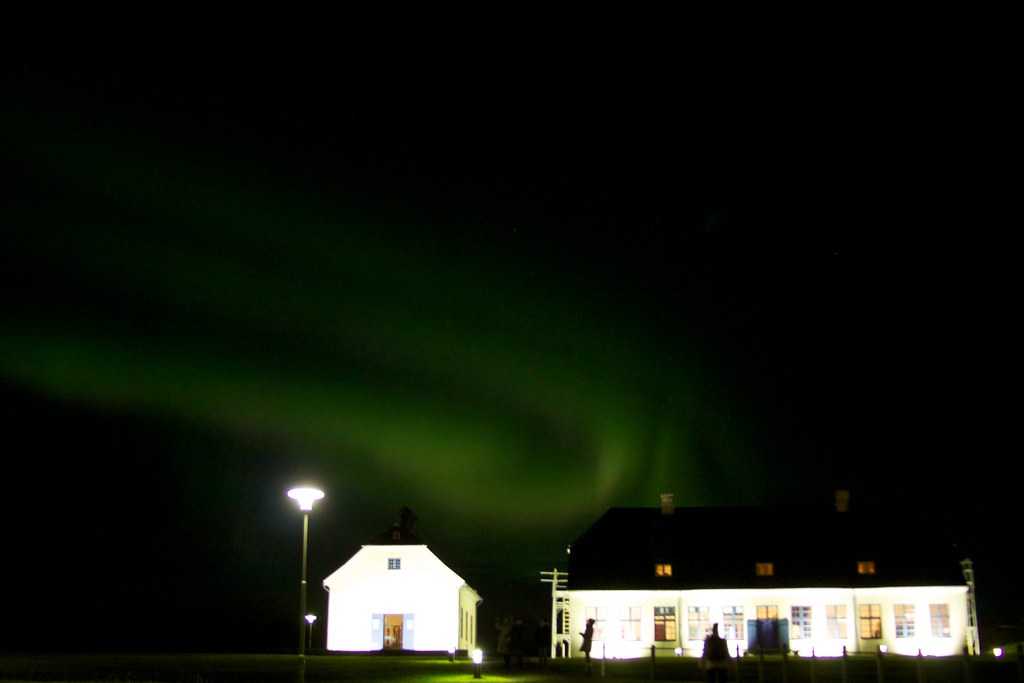
Source: mckaysavage Depending on your flight, you can arrive in Keflavik Airport at around late afternoon (4 or 5pm) to do the necessary things needed for your 4-day vacation. The first thing to do is get your rental car in Thrifty and do the drive to Hotel Highland in the interior of the Icelandic Highlands. Once checked in, you can unpack, eat dinner and lounge at the hotel restaurant that serves gourmet food made from the purest and finest local ingredients prepared by international chefs. Then, you can just relax for the rest of the night by exploring its surroundings or---given the chance---have a glimpse of the Northern Lights. Here is the map for Day 1.
Day 2 - Gullfoss – Geysir Tour and SnorkelingYou can leave the Hotel Highland early in the morning since it will take almost three hours to get to Gullfoss (Golden Falls), the undisputed queen of Icelandic waterfalls located in the canyon of the Hvita river. Once there, you can ask Reykjavik Excursions to take you to the Gullfoss-Geysir tour. This amazing tourist destination is very famous because the water rushes down the three steps of lava layers with breathtaking power and splendor. The flow of the water and how it “vanishes” in the crevice that is obscured from view is one of the things that makes it magnificent and will leave you at awe. After touring this, you will have the opportunity to taste and feast in the traditional Icelandic meat soup and lunch of the Gullfoss café.

Source: JasonParis The next part of the tour is the geothermal area of Geysir , which is known to be The Great Geysir. It is known to sprout boiling water of various formations that goes up to 70 meters in the air and the ground gurgles and bubbles. There are also various hot springs in the vicinity and you can try for relaxation before you snorkel in the Silfra fissure.

Source: big-ashb Before the day ends, it is good to visit Thingvellir, which is home to Þingvallavatn, the largest natural lake in Iceland. It is one of the best parts to do for this day because it is relaxing and exotic at the same time. Dividing is also an option here and if you have diving equipment, you can dive into The Silfra fissure---one of Iceland’s best-kept secrets because it combines crystal clear waters and blissful shades of blue. The best part here is you don’t have to be stressed while diving as you will feel weightless as you float your way into the lazy and peaceful current.

Source: Vidar - Aqua-Photos.com The day ends by going back to Hotel Highland and having your dinner in their restaurant and bar. Lounge a bit and prepare for the next day tour before going to sleep. Below is the map of Day 2:
Day 3 - Reykjanes and Blue LagoonThis day is about touring simple yet interesting attractions. You can check out from Hotel Highland and start driving towards Reykjanes, a peninsula and volcanic system, and start explore at 2-3 attractions. We would suggest The Leif the Lucky Bridge near Grindavik that is known as the boundary mark of the Eurasian and North American continental tectonic plates. You can also visit fishing towns such as Grindavik and eat at a great restaurant or just explore the town.
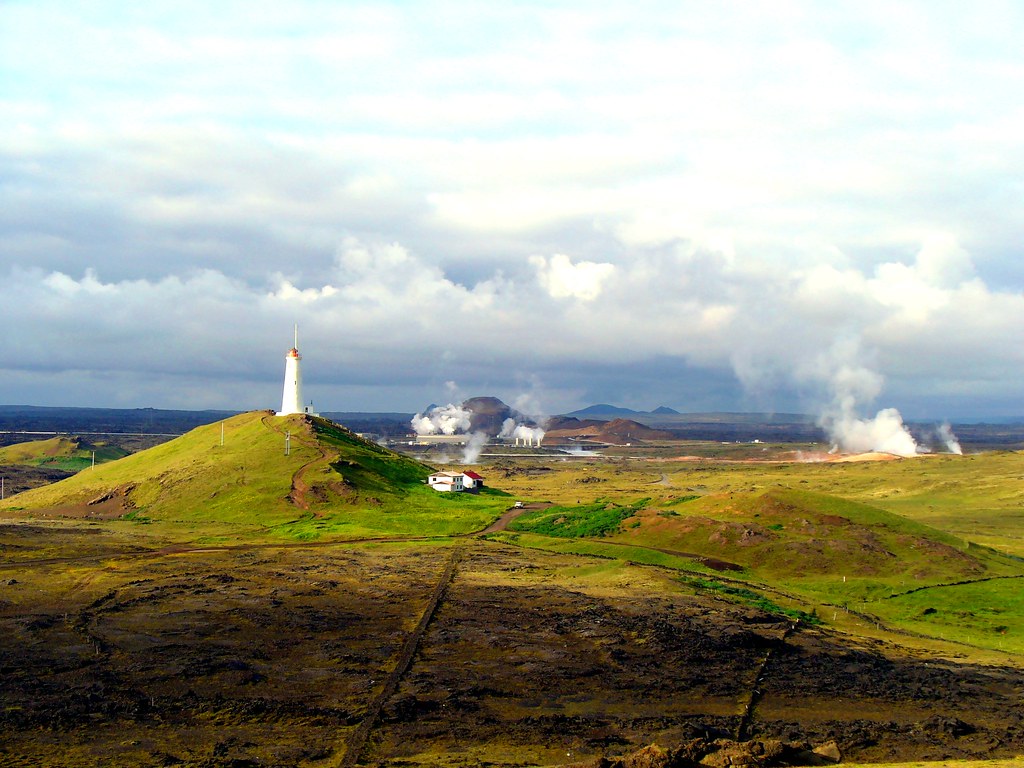
Source: rwhgould After the touring and being out in the sun the past days, it is time to relax and be energized by going to the Blue Lagoon. You can get water massages and beauty treatments or have a day tour with the establishment. Either way, you can spend the rest of the remaining day here so you can feel energized and serene. There are various services to choose from in Blue Lagoon that will match your preferences and tastes.
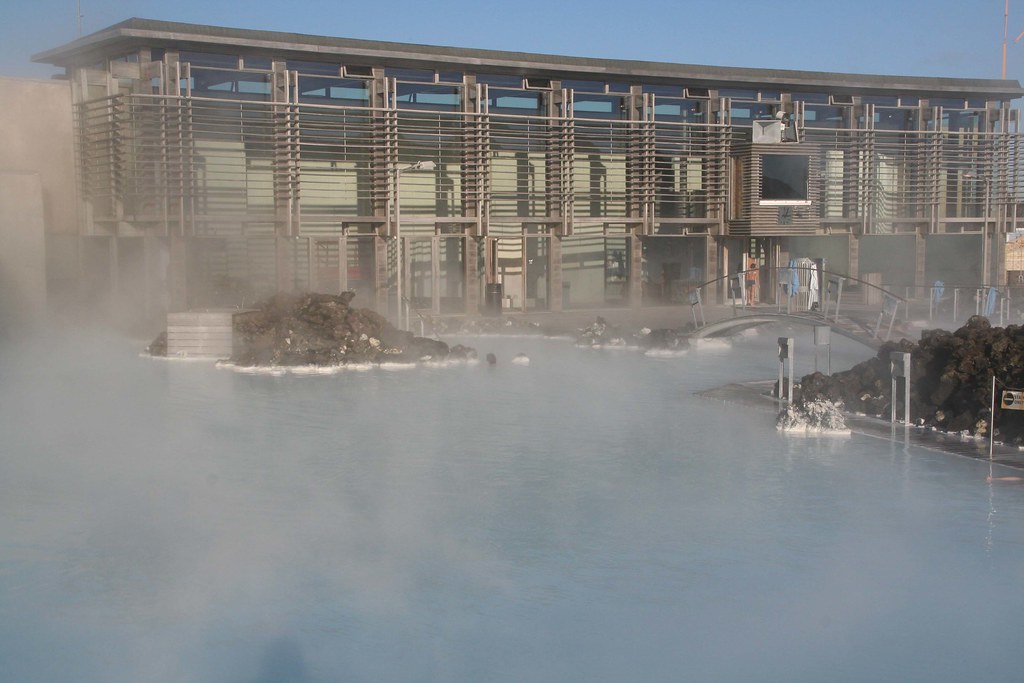
Source: Stephen_AU Once done rejuvenating, you can drive to Hotel Northernlights Inn and check in so you can double check your stuff before leaving Iceland the next day. Here is the map for Day 3:
Day 4 - Day 4 – Departure from IcelandOnce done with you last-minute preparations, you can drop off your rental car in Thrifty and go to the Keflavik Airport for your departure. Hope you had a wonderful vacation here in Iceland. Below is a map of Day 4:
|
Cosy country side hotel
Northern lights searching at a country hotelSearch for the northern lights and explore the spectacular attractions of South Iceland on this 3-day tour at a charming country hotel with Icelandic Farm Holidays |
|
|
This tour is ideal for those looking for a short break which combines city life, a stay at a beautiful country hotel and a northern lights hunt. The tour is based at Country Hotel Anna, a small and charming family-run hotel located near many of Iceland‘s most stunning sites. The tour includes a rental car for 3 days, accommodation in Reykjavik and at Country Hotel Anna in South Iceland, two dinners and an escorted evening northern lights tour. View more information about Country Hotel Anna including photos and video here.
|
|
THE 3 DAYS ITINERARYDay 1: Iceland arrival, staying in Reykjavik
Arrive at Keflavik airport and take the Flybus to your hotel/guesthouse in Reykjavik. In Reykjavik you will find many excellent restaurants, downtown design shops, great nightlife and a vibrant cultural scene.
Day 2: Drive to the South CoastYou will pick-up your rental car in the morning. Drive south and visit the precious natural attractions of the “Golden Circle“, such as Thingvellir national park, Gullfoss waterfall, Geysir geothermal area in addition to the beautiful Seljalandsfoss waterfall. In the evening you will enjoy staying at the charming and romantic Country Hotel Anna. The hotel is located in the beautiful area of Skogar, where you will be staying for the next two nights. In the evening you will hopefully see the northern lights dance in the sky.
Day 3: The South East and northern lights tour Today you should head for the amazing Jokulsarlon glacier lagoon, view the birdlife at Dyrholaey, explore Skogarfoss waterfall, Skaftafell National Park and Kirkjubæjarklaustur. When you are back at the hotel a delicious evening dinner will be waiting for you – just before you head out on a 3-hours guided evening tour with northern lights searching and exploration of the area.
WHAT IS UNIQUE ABOUT THIS TOUROn this tour you can combine a city experience in Reykjavik with a stay in the beautiful countryside of South Iceland, in only 3 days. By staying in the countryside you increase your chances of viewing the mystical northern lights. You also get to explore some of Iceland‘s most precious attractions in a landscape of black sands, glacier lagoons, waterfalls, hot springs and volcanoes - including the world famous Eyjafjallajökull volcano!
|
Going to Iceland
Northern light in Iceland. Shot on various locations - beautiful scenery and amazing work done. Takes a lot of patience to shoot this.
See them in Reykjavik, Iceland
See northern lights in Reykjavik, Iceland. Time-lapse shot made during a night in winter wonderland Iceland.
See the northern lights tonight !
See the northern lights tonight at Grundarfjordur, Iceland. Short but beautiful shot of the northern lights in Iceland.
Breathtaking show of borealis and beautiful scenery in Iceland
Breathtaking show of borealis and beautiful scenery in Iceland. Amazing photographs in this video. Not only northern lights but also more nature scenery from Iceland.
Auroras Borealis in Iceland
Beautiful Auroras Borealis shots in Iceland. Shot close to Hotel Ranga, near Hella in south Iceland.
Northern lights holidays in Iceland
Amazing northern lights holidays in Iceland. It is a real Aurora borealis feast of time lapse photography.
Northern lights in iceland
Northern lights in Iceland, WestfjordsEnjoy a wide range of outdoor activities while you wait for the northern lights in Iceland in a stunning setting in the Westfjords, with Icelandic Farm Holidays. |
|
|
This fantastic 5-day tour with Icelandic Farm Holidays is for travellers who want to escape from a busy city life to relax and enjoy nature at its best. The tour is based at Heydalur, a country hotel in a beautiful valley inside Mjóifjörður fjord in northwest Iceland. The tour includes return transfer from Reykjavik to Heydalur, 4 night‘s accommodation at Heydalur, a guided fishing tour by snowmobile or jeep, an excursion around the beautiful Heydalur Valley and a choice between an excursion to Ísafjörður town or activities such as kayaking and horse riding. In the evenings you can enjoy freshly prepared local food in the converted barn and afterwards bathe in a natural hot spring pool and wait for the magical northern lights to appear. View more information about Heydalur including photos and video here
|
|
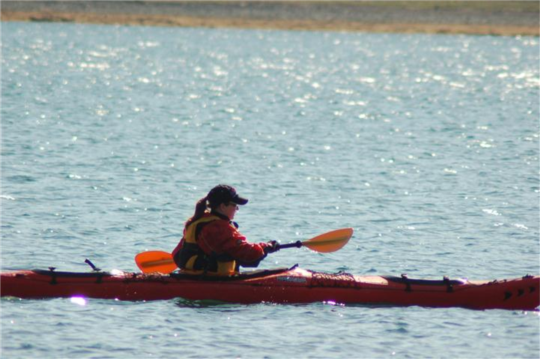 |
 |
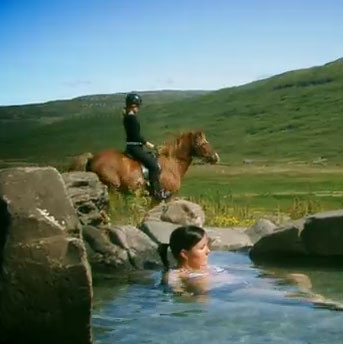 |
 |
||
What is unique about this tour?Because of the impossibility to know exactly when the northern lights in Iceland will show up, it is a good idea to plan your trip to a place where many other activities are on offer. At Heydalur there is so much you can do and the remote location far up north maximises your chances of seeing the northern lights. The Westfjords are the most rugged part of Iceland, offering breathtaking scenery including steep fjords, mountains, bird cliffs, waterfalls, beaches and natural hot springs perfect for bathing.
|
|||||
Tour to the Arctic Circle
Northern lights on the Arctic CircleStay at a Icelandic farm, Bjarnargil, far in the north Iceland & enjoy hiking to nearby mountains, try out the amazing out-door swimming pool at Hofsos and so much more |
|
|
Staying at Bjarnargil - a farm accomodation offered by Farm Holidays - is a great selection if you want to experience the northern part of Iceland and the infamous Skagafjörður with beautiful mountain surrounding while you wait for the Iceland northern lights to show up. Close to Bjarnargil in Fljótum we have the out-door swimming pool in Hofsos a well known for its amazing view. See here.
|
|
What is great with this location for your northern lights tour?Staying outside of the main cities e.g. Reykjavik while waiting for the northern lights to show up is wise because you dont need to worry about any light pollution. In Bjarnargil, Fljotum, you dont need to worry about any light pollution at all and you can easily walk up to some of the mountains to have a better view. In case they don´t show up for some days then you have many activities in Skagafjordur to enjoy, from horse riding, laying in the swimming pool at Hofsos, take a quick tour to the closest fishing villages - just to name few activities you could do. Below you see some photos from Bjarnargil and surrounding.
[vslider name="10"]
|

